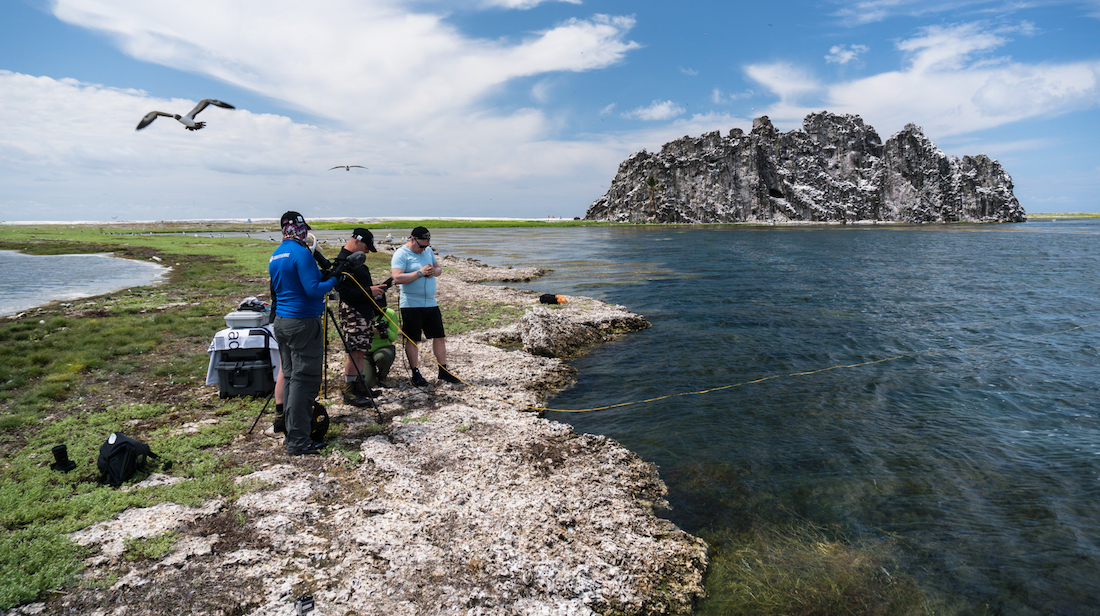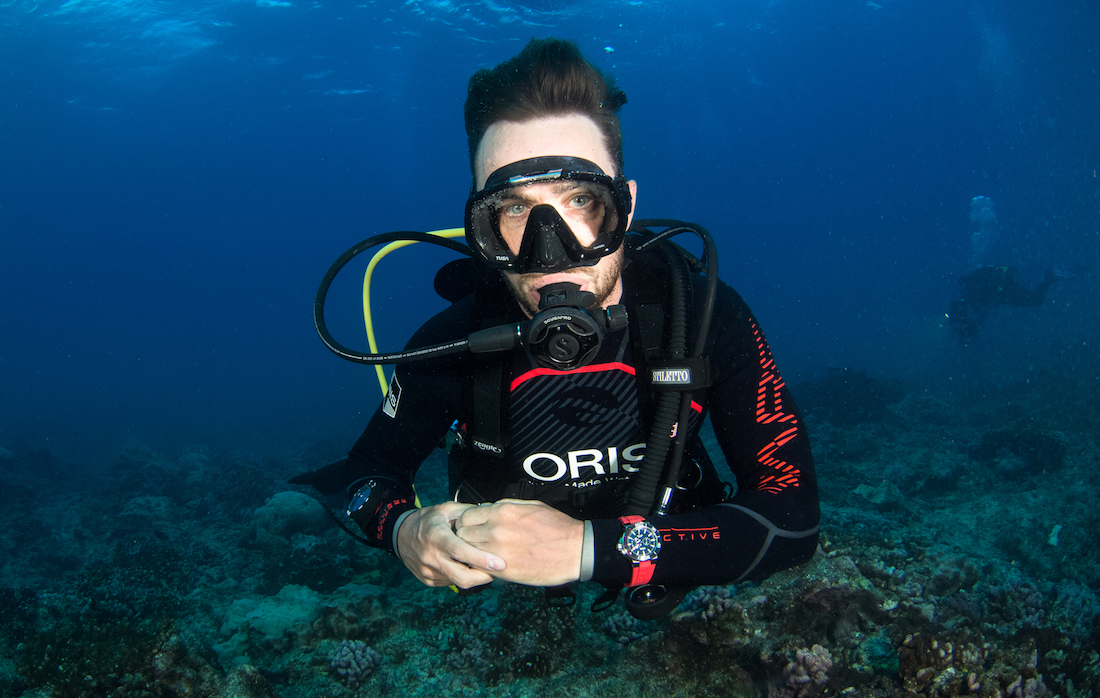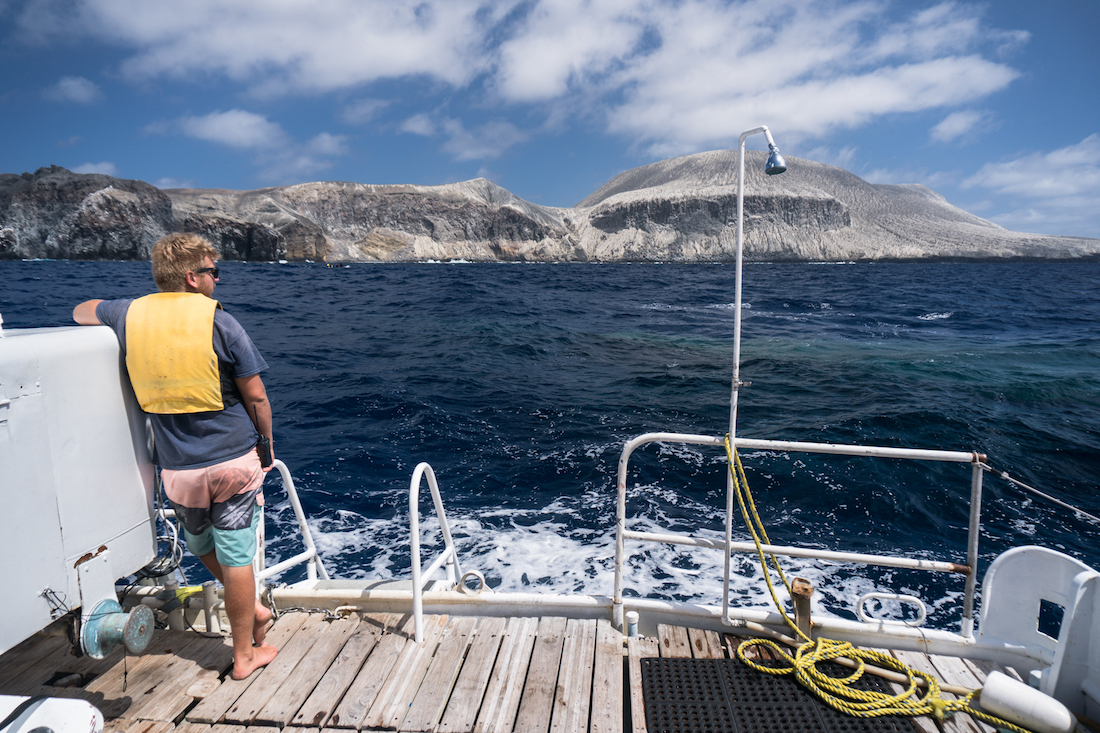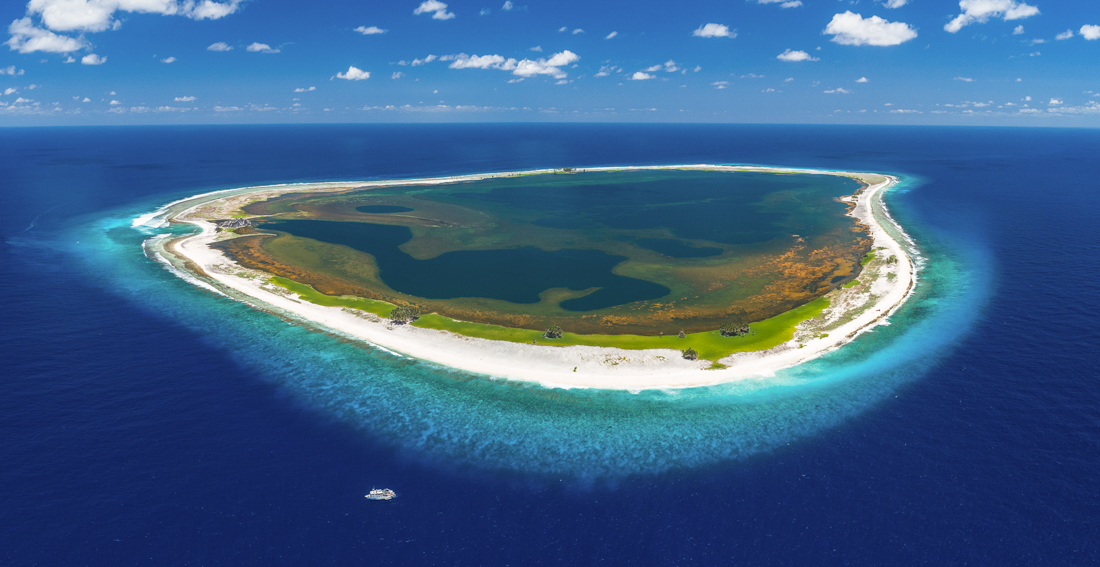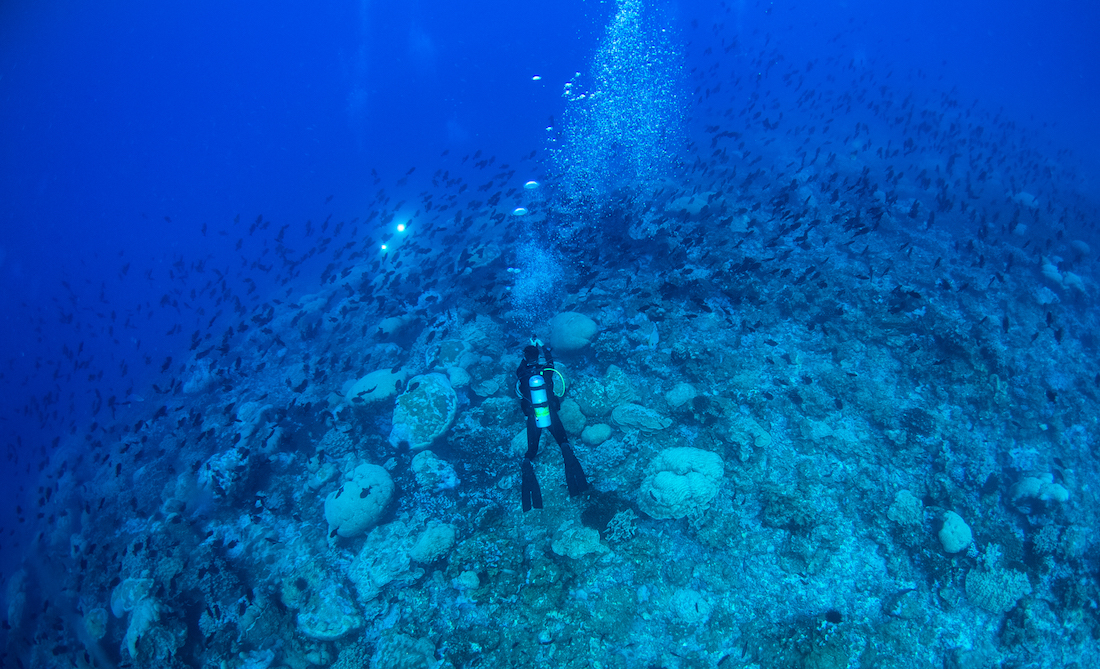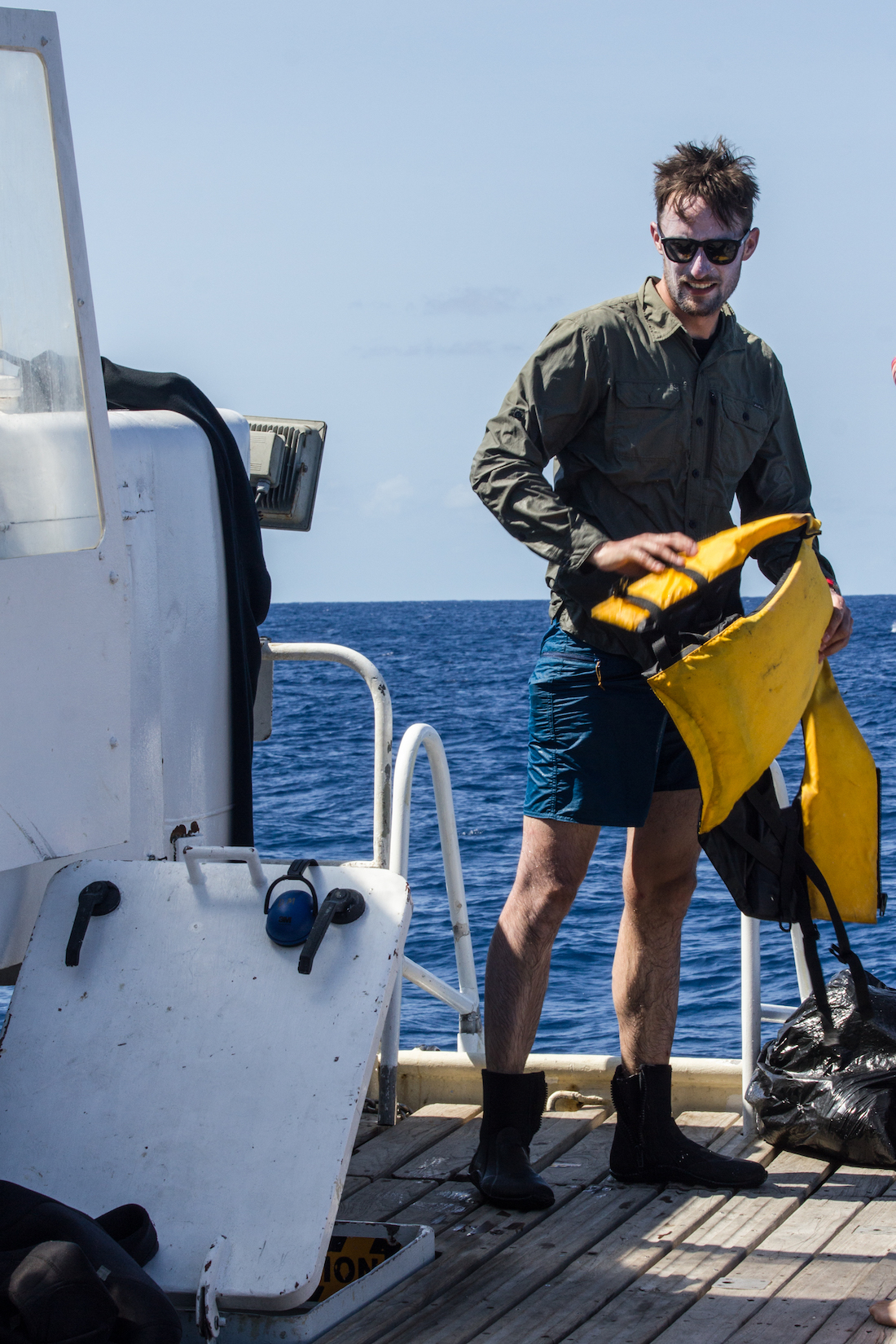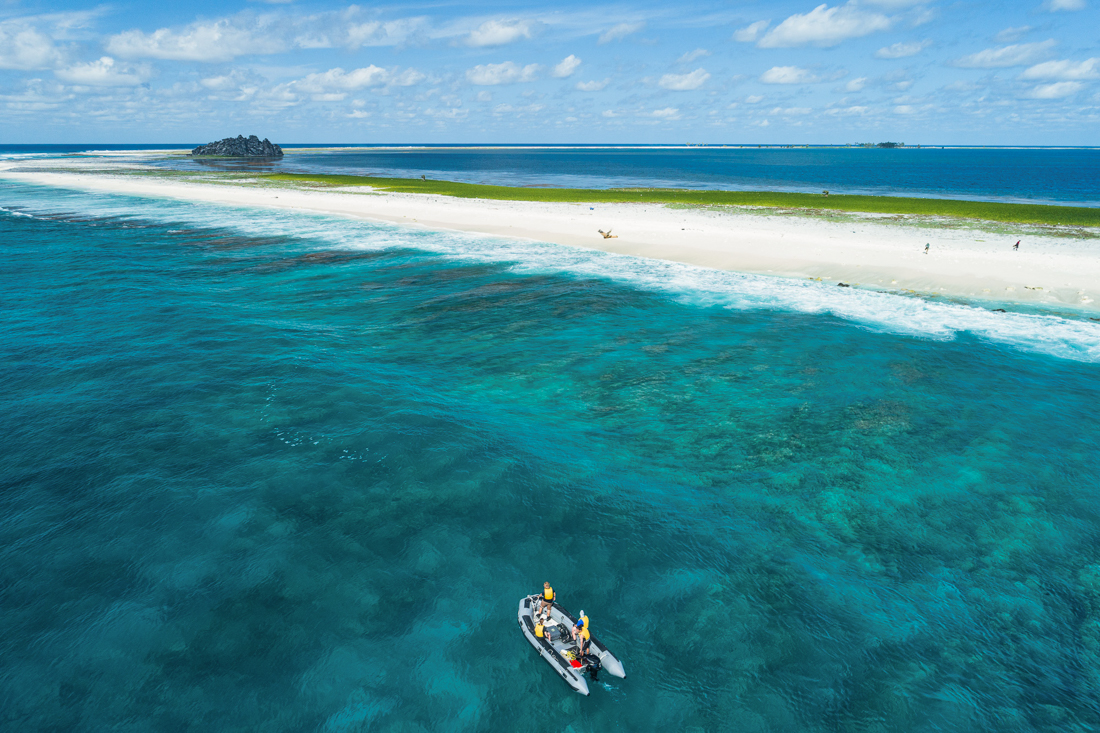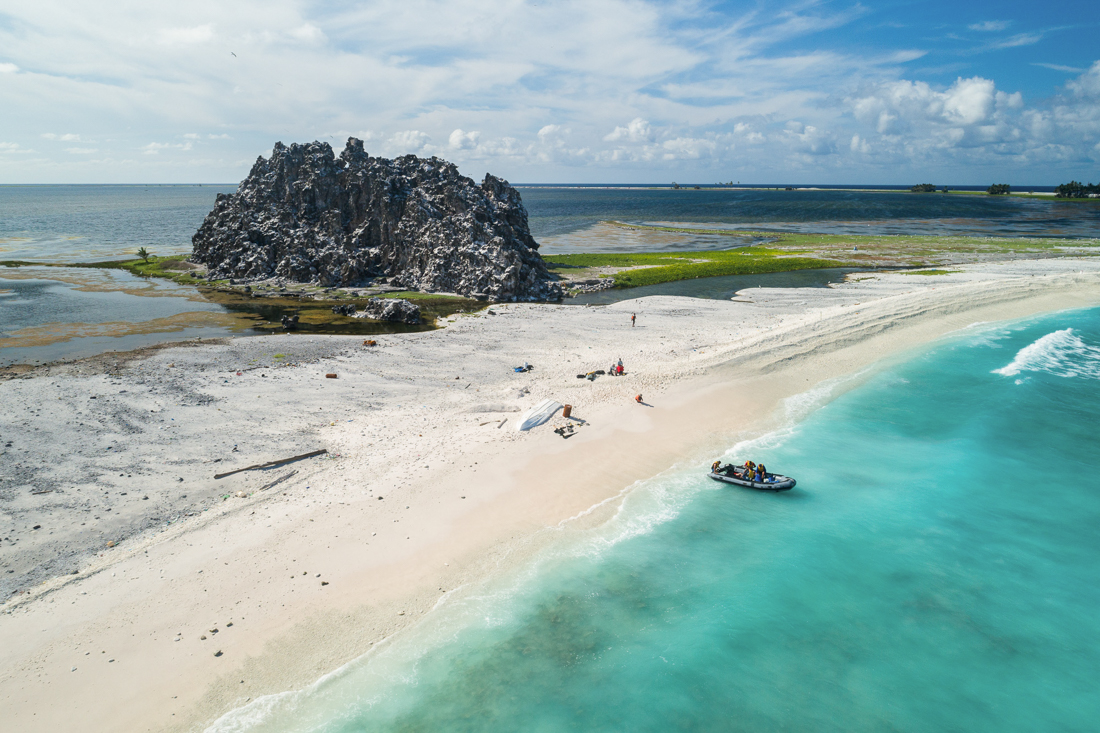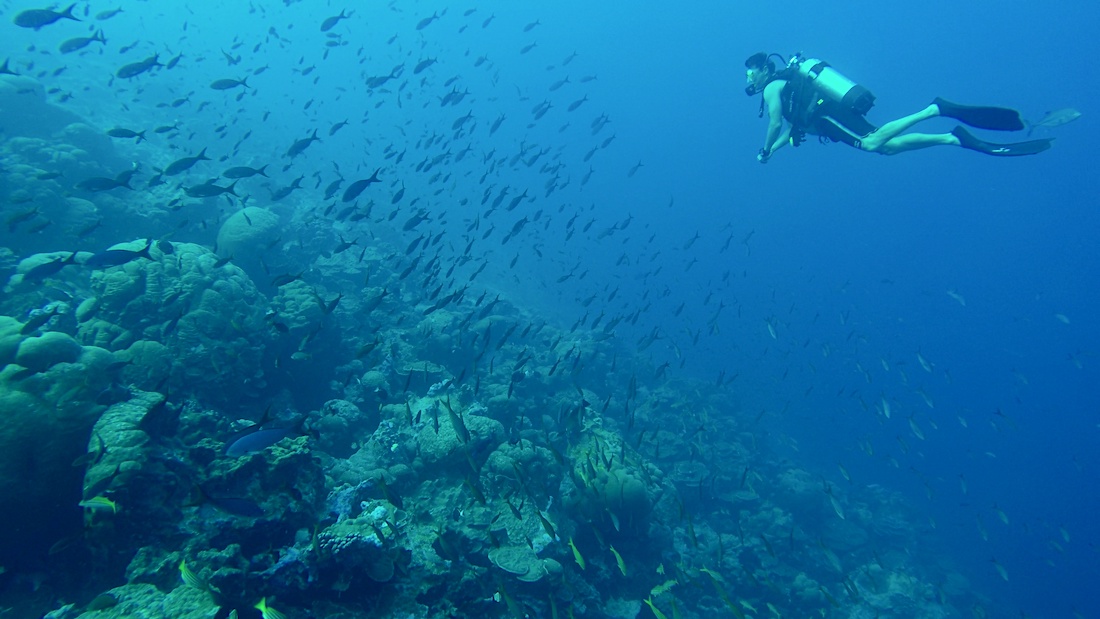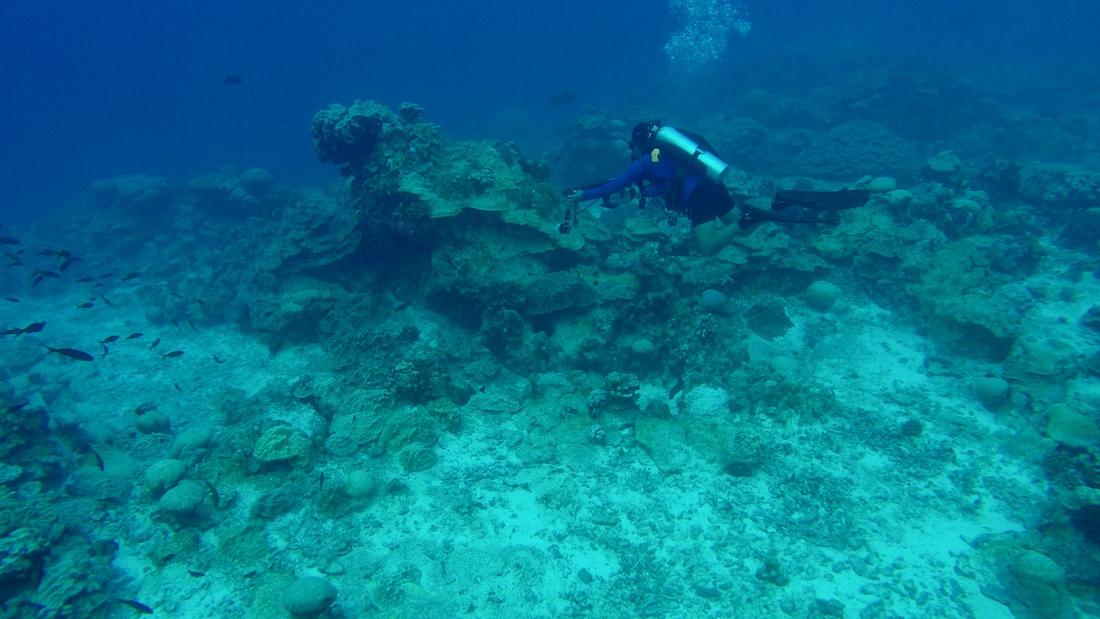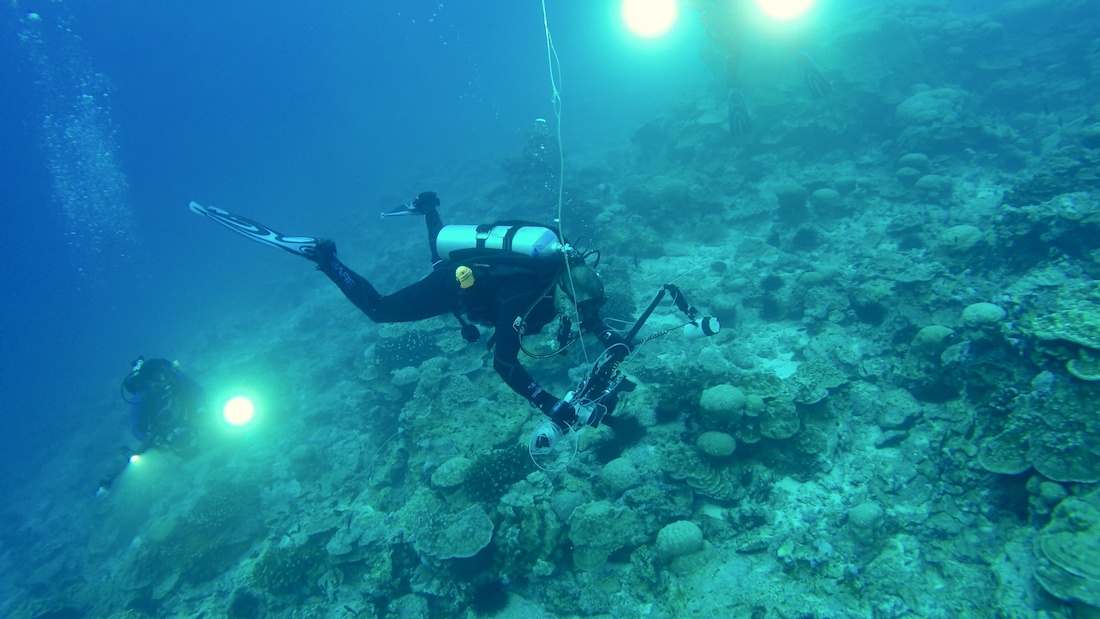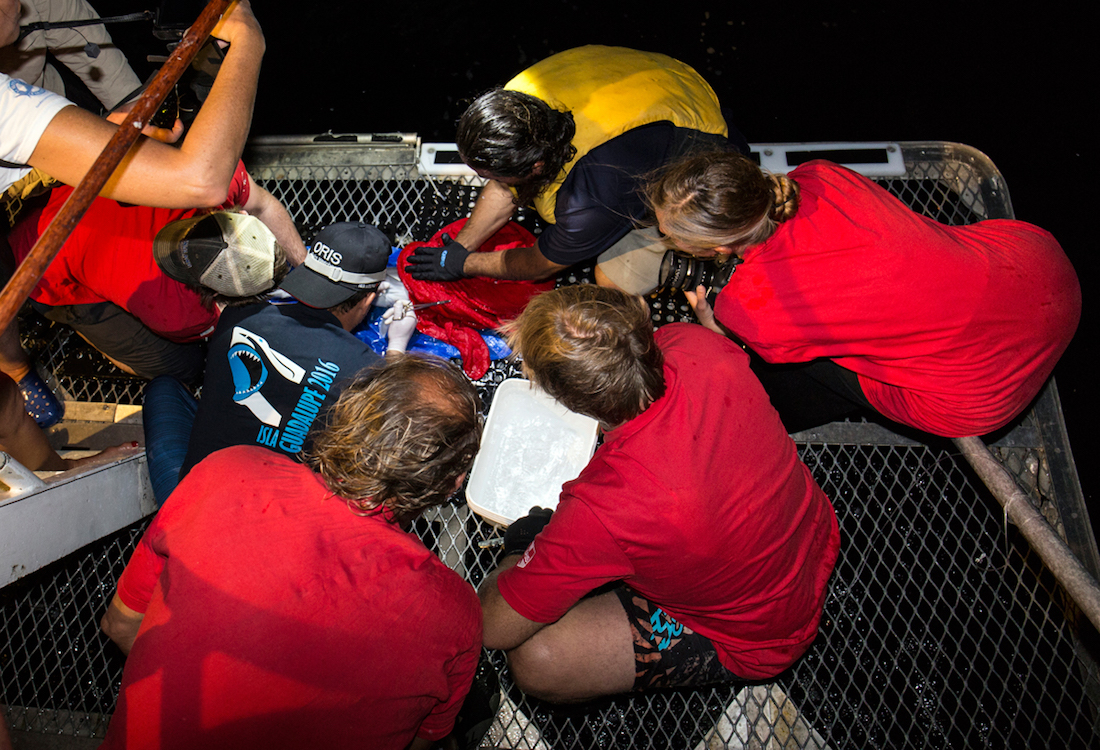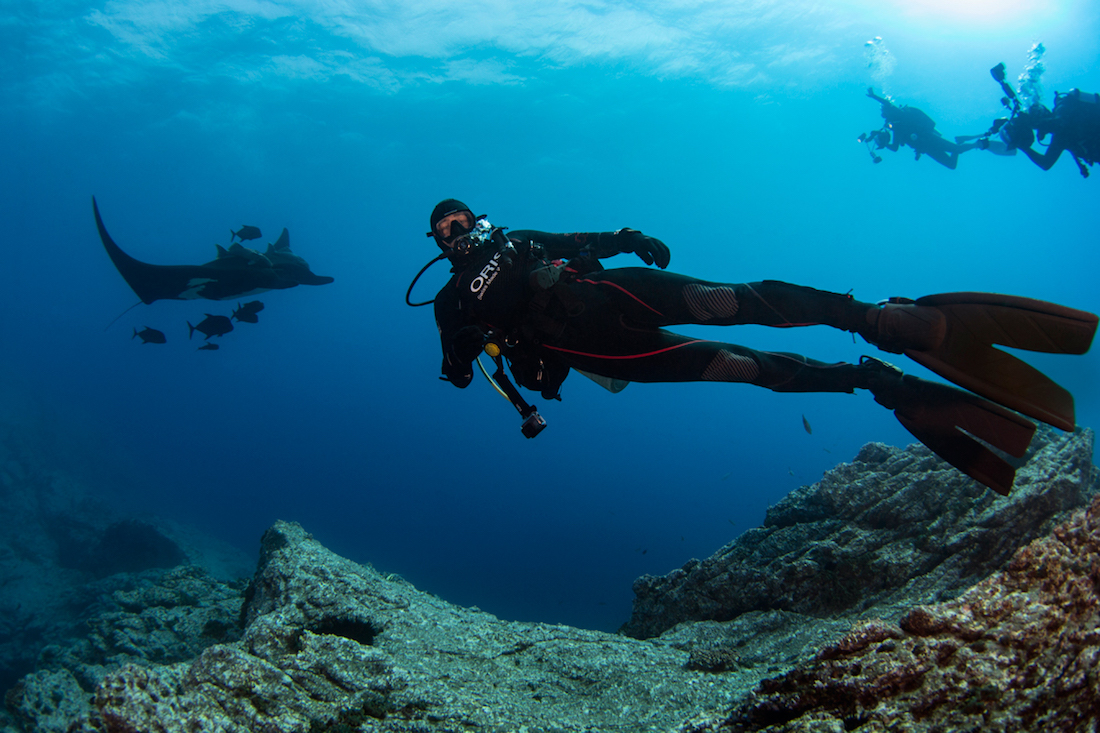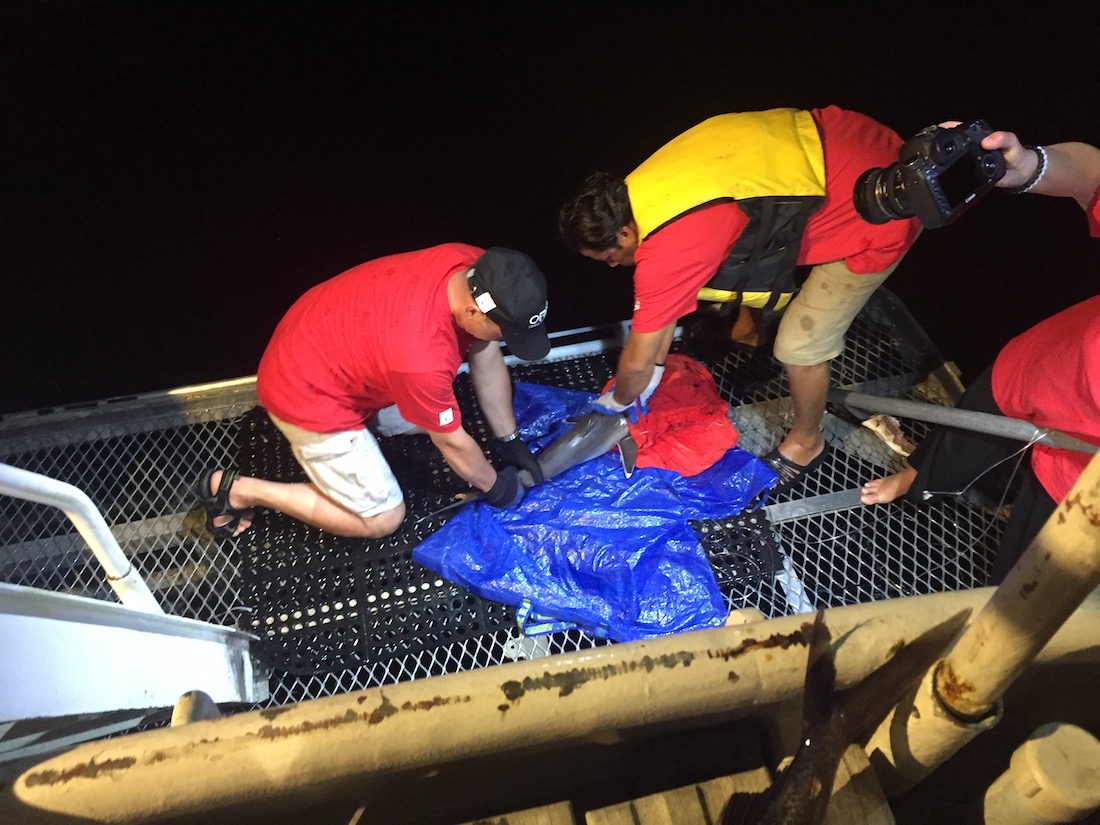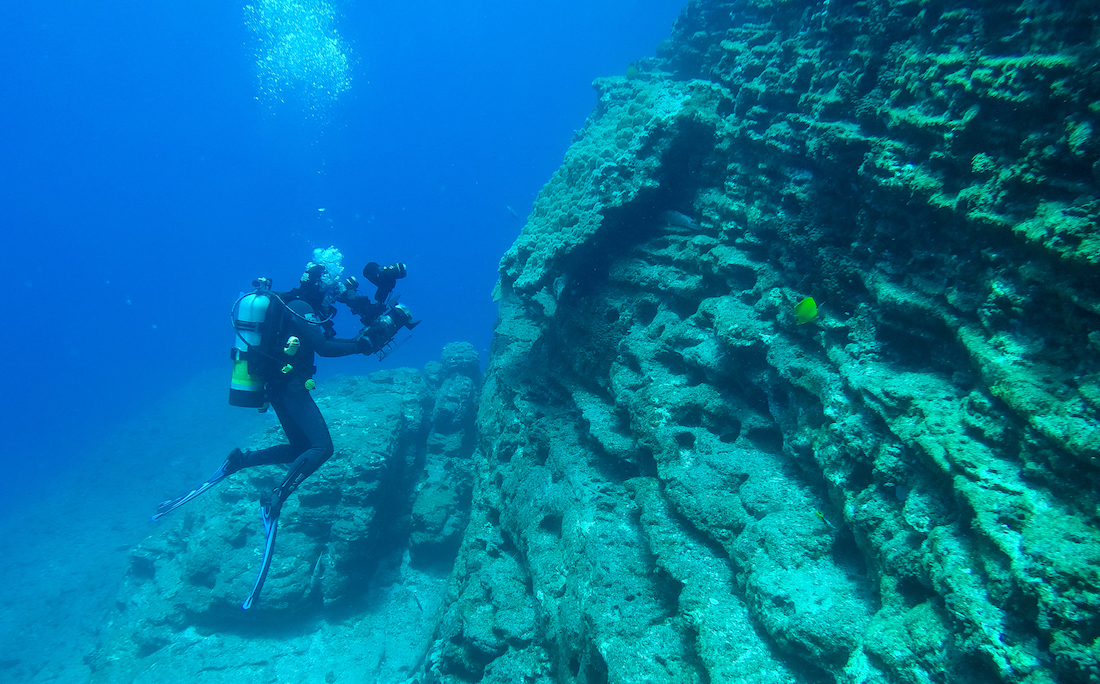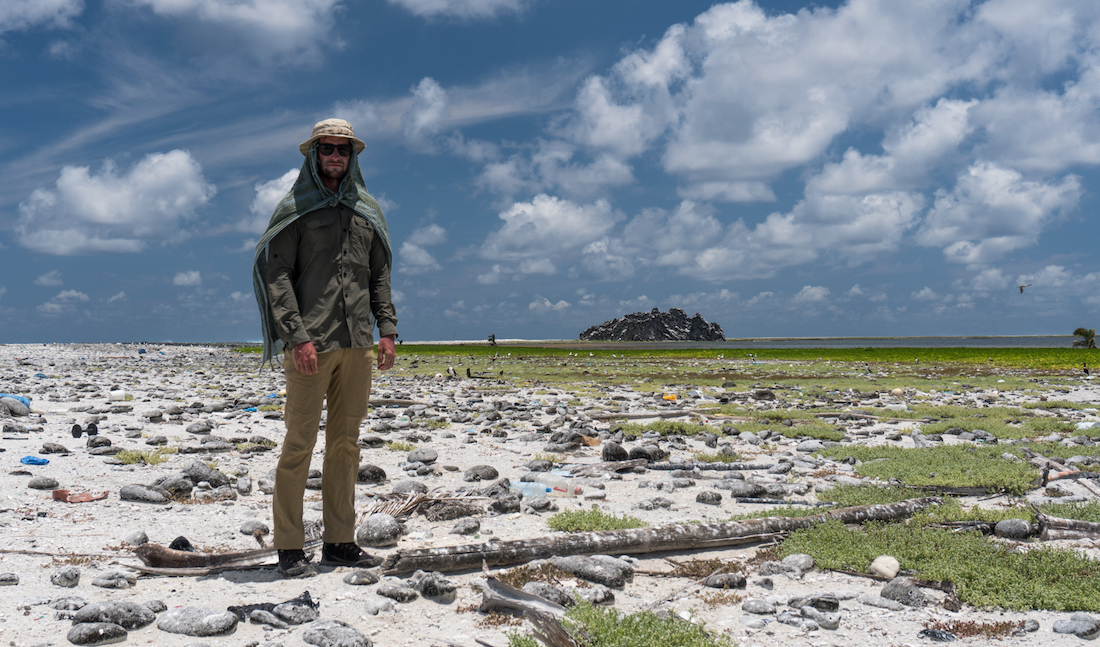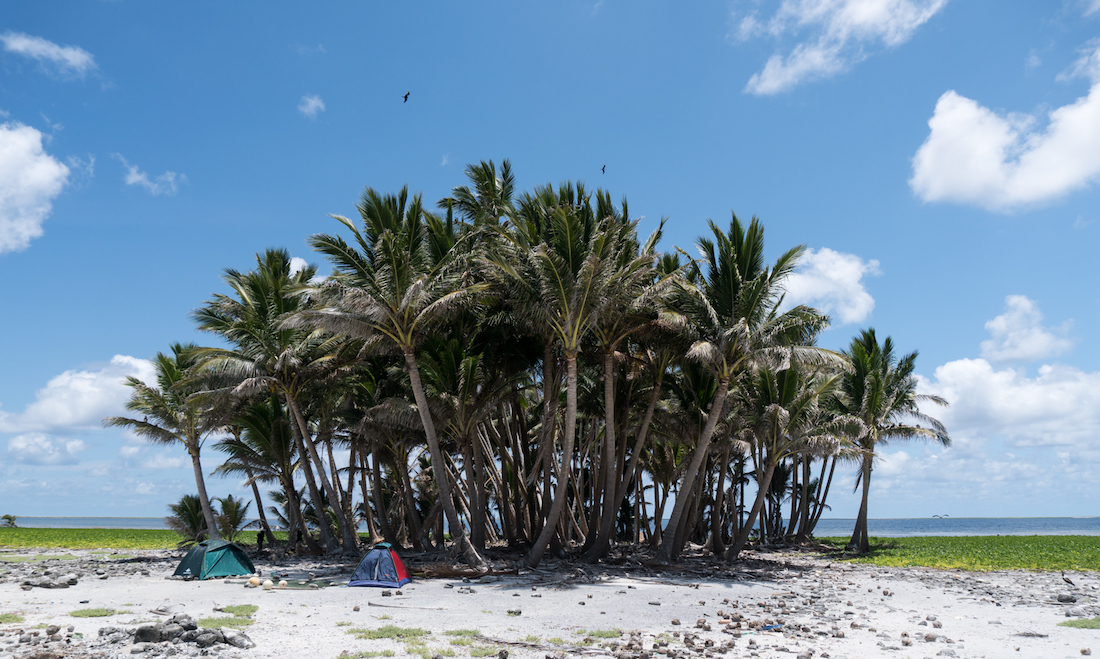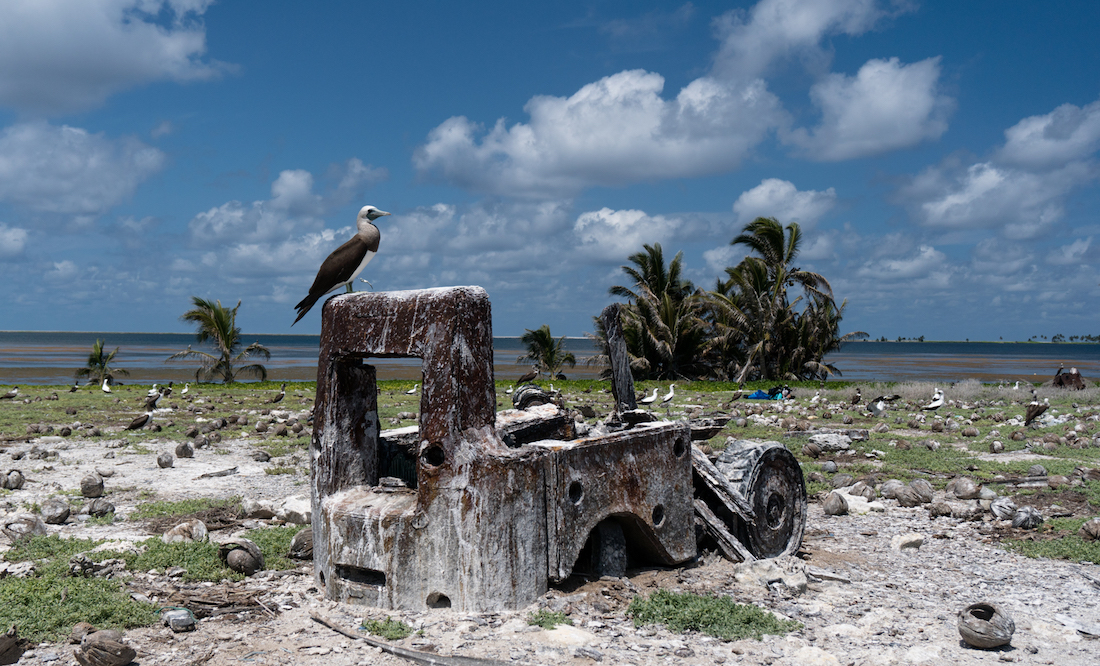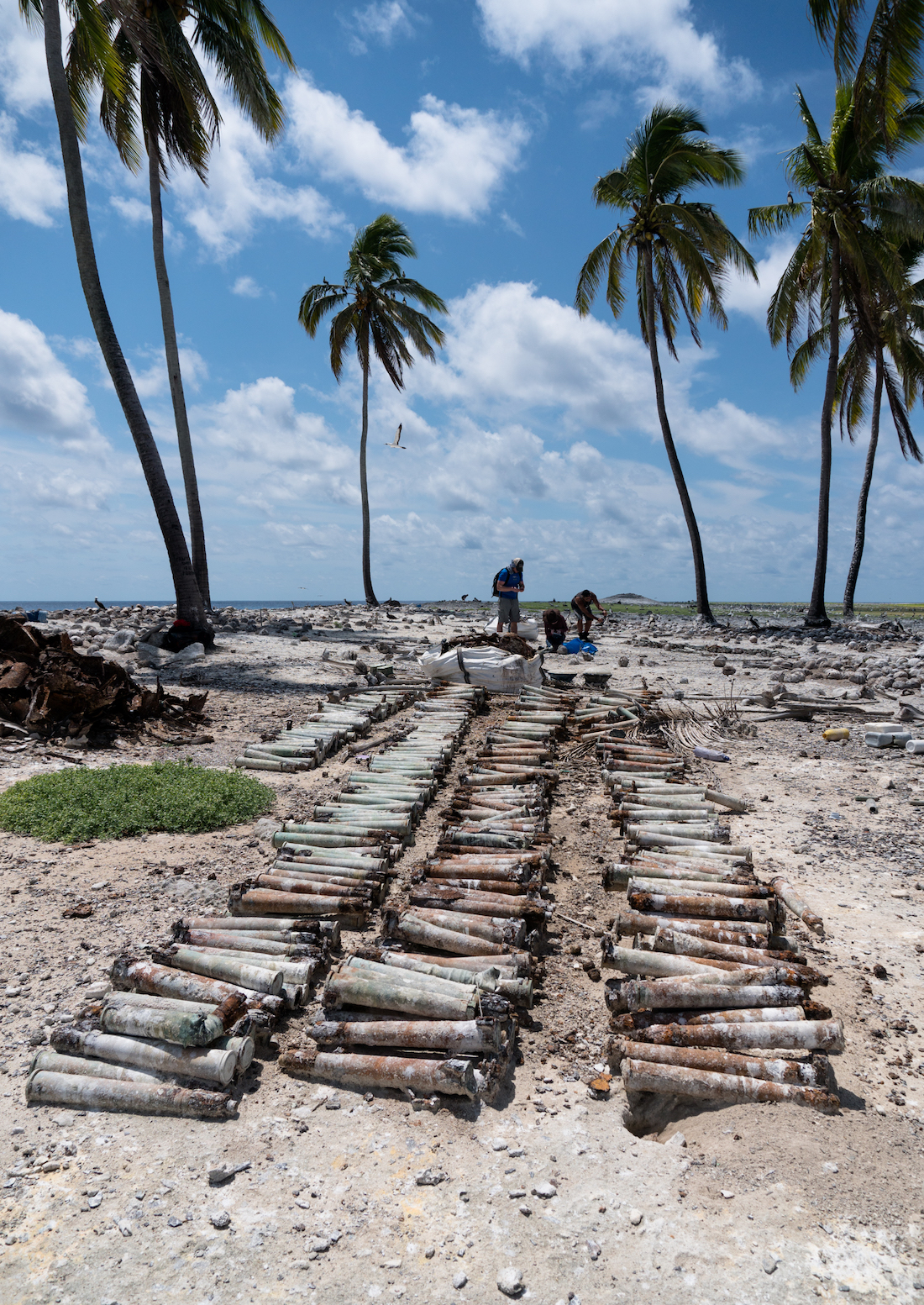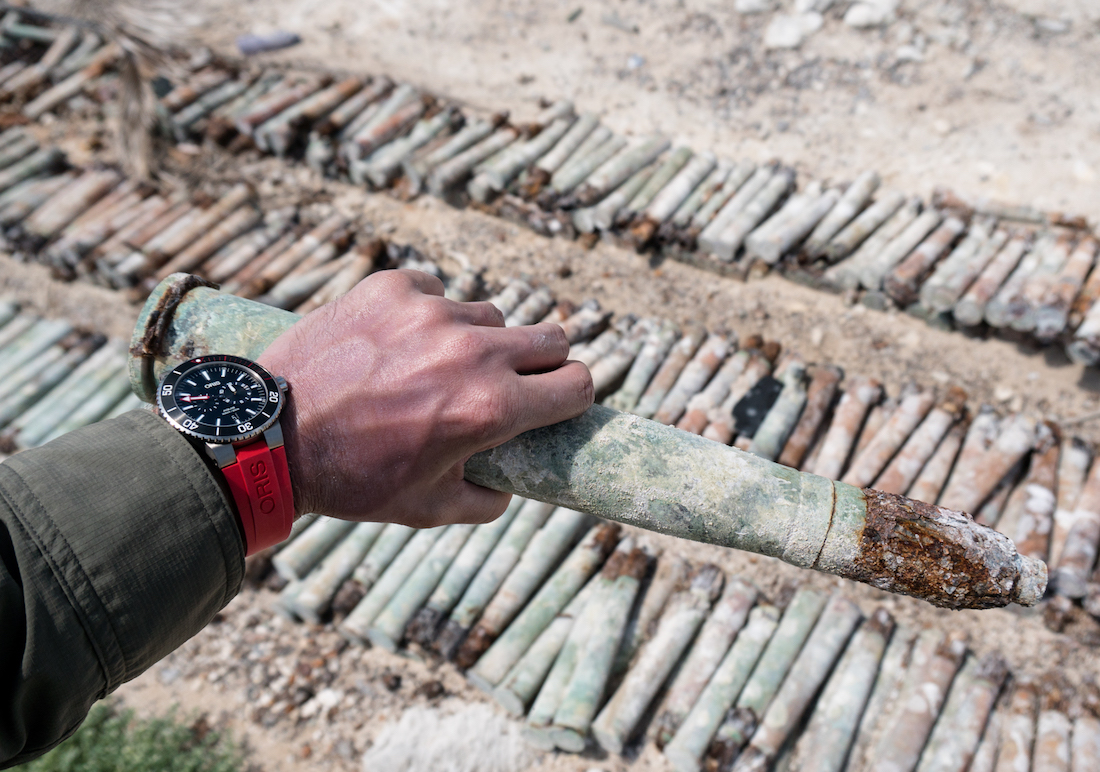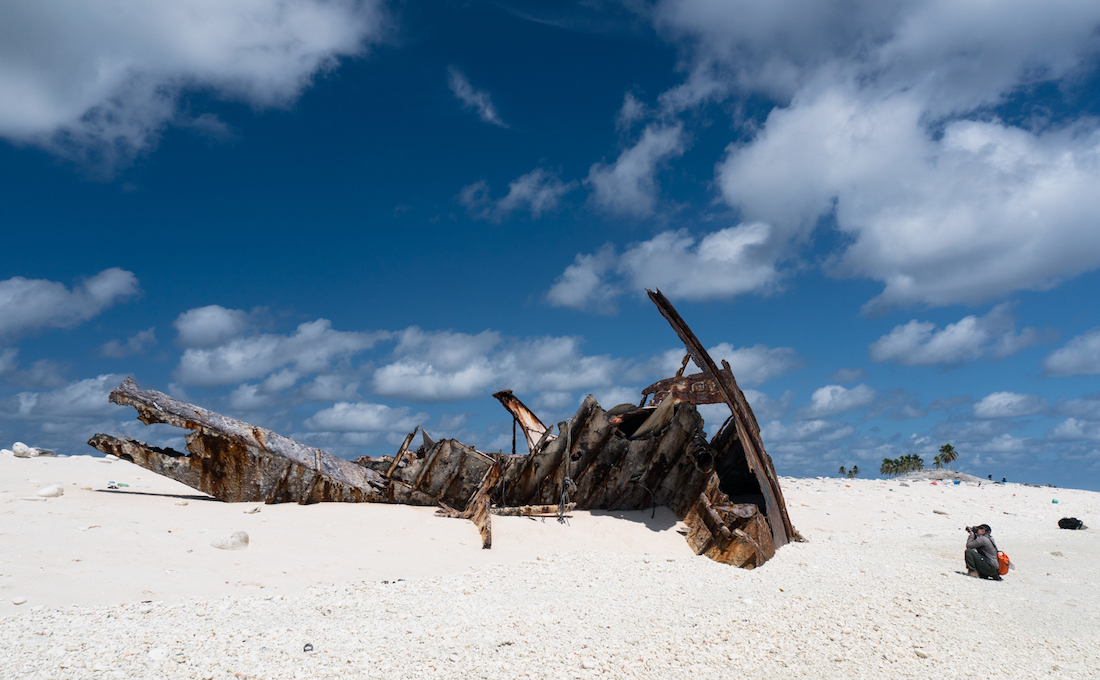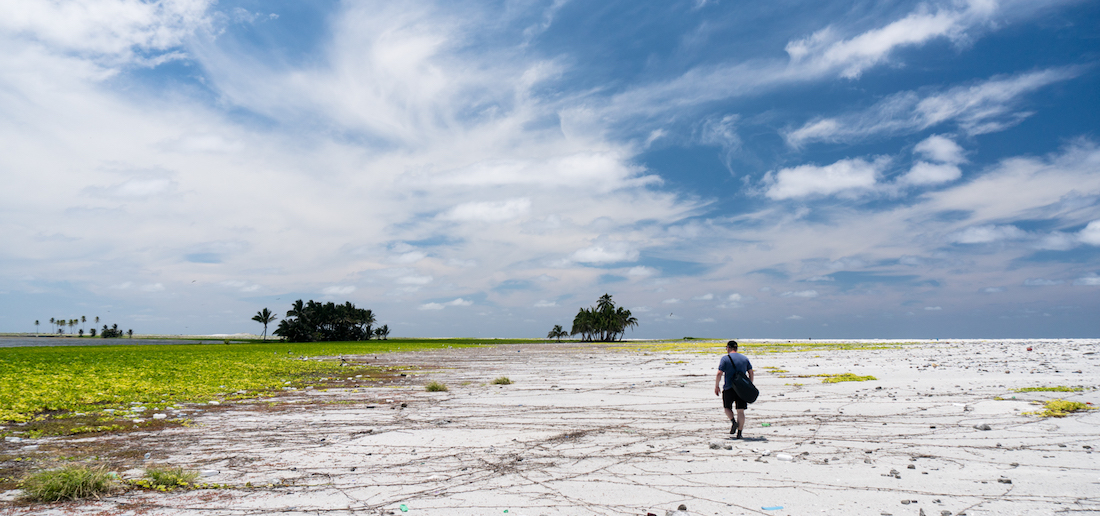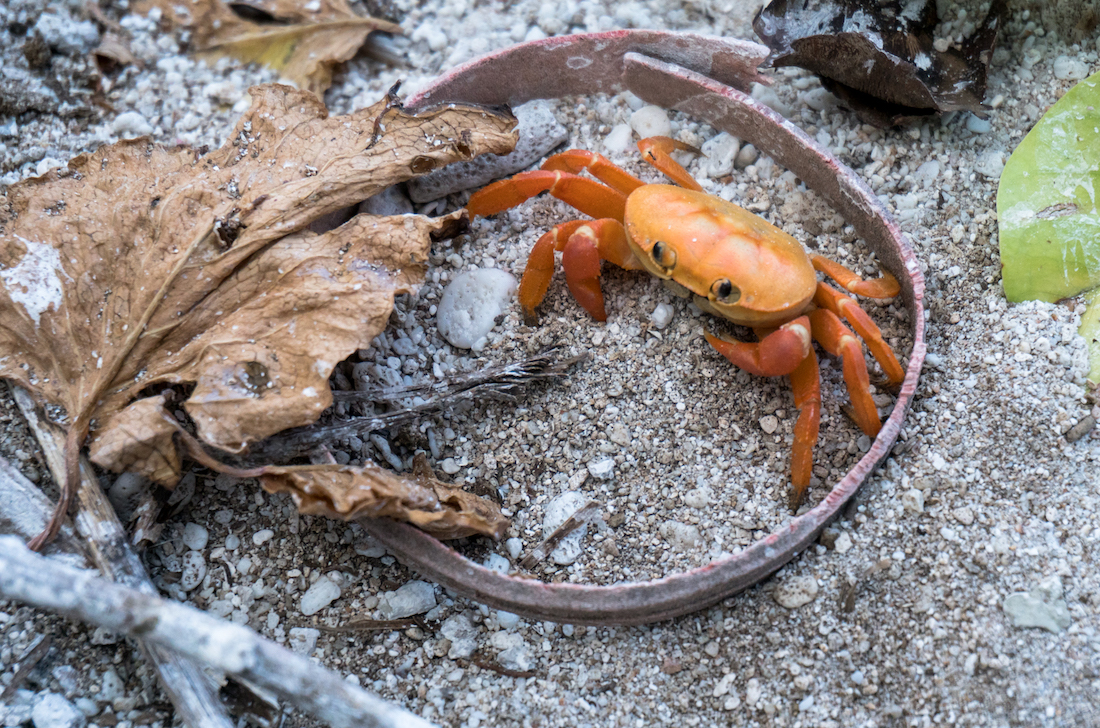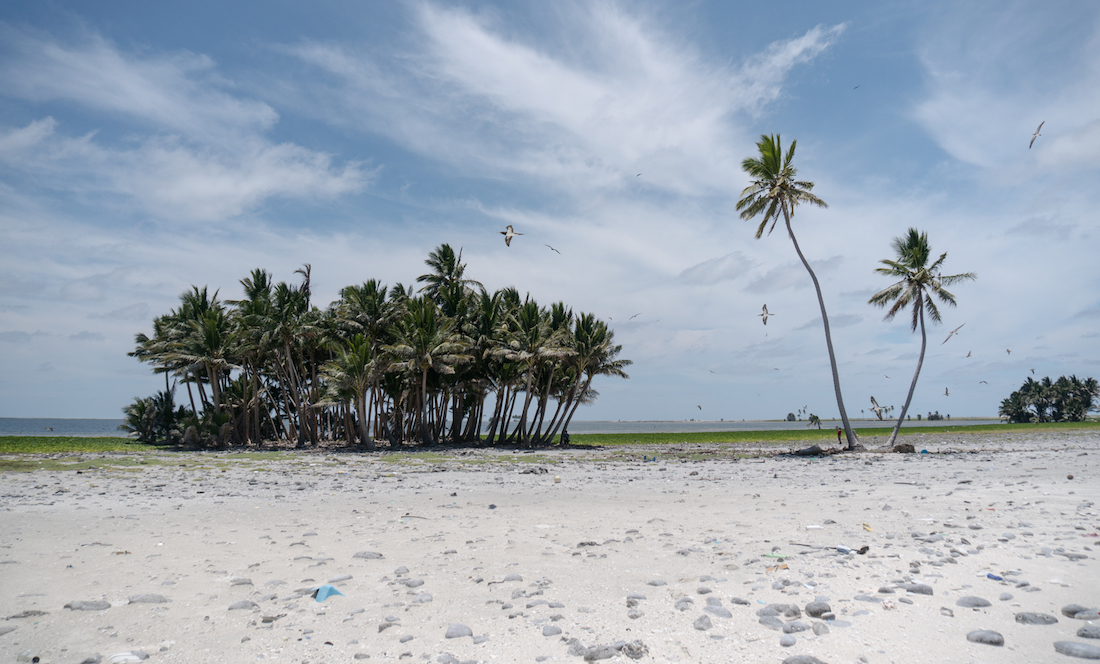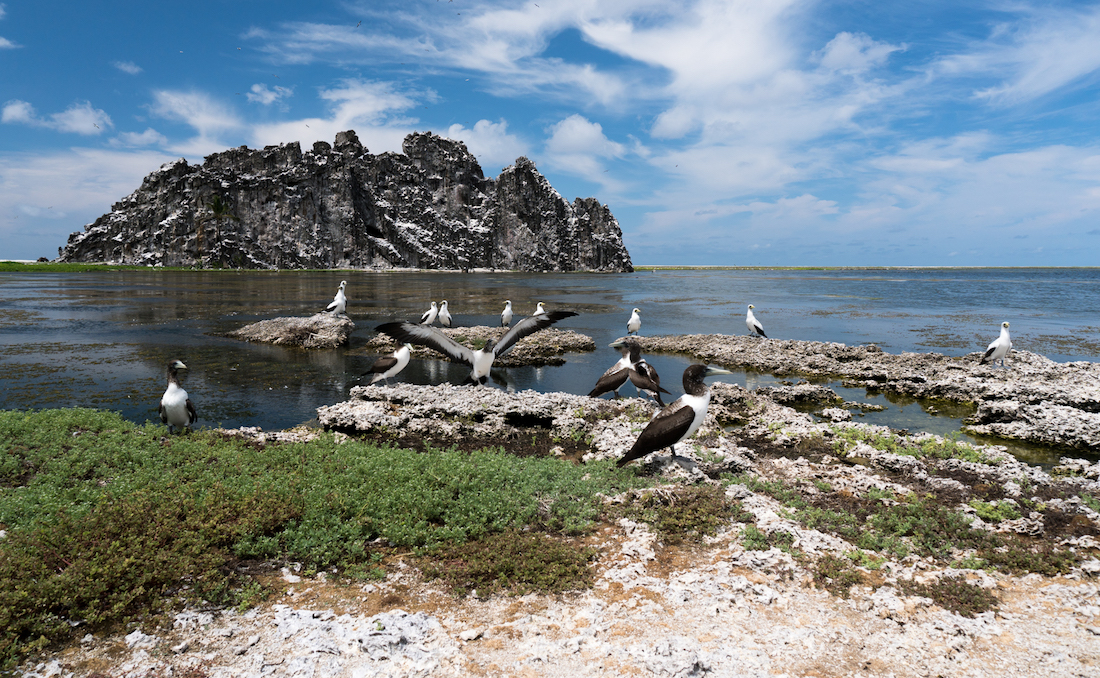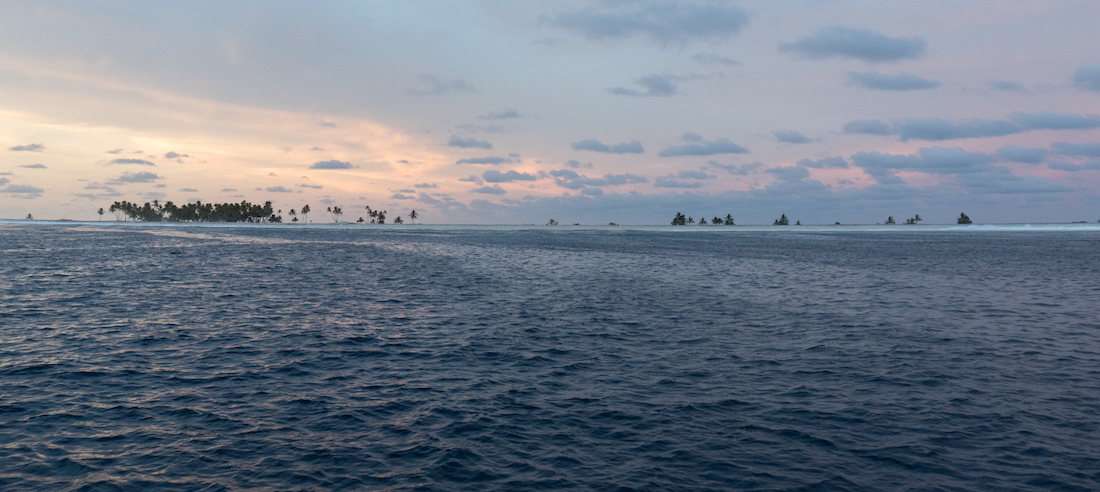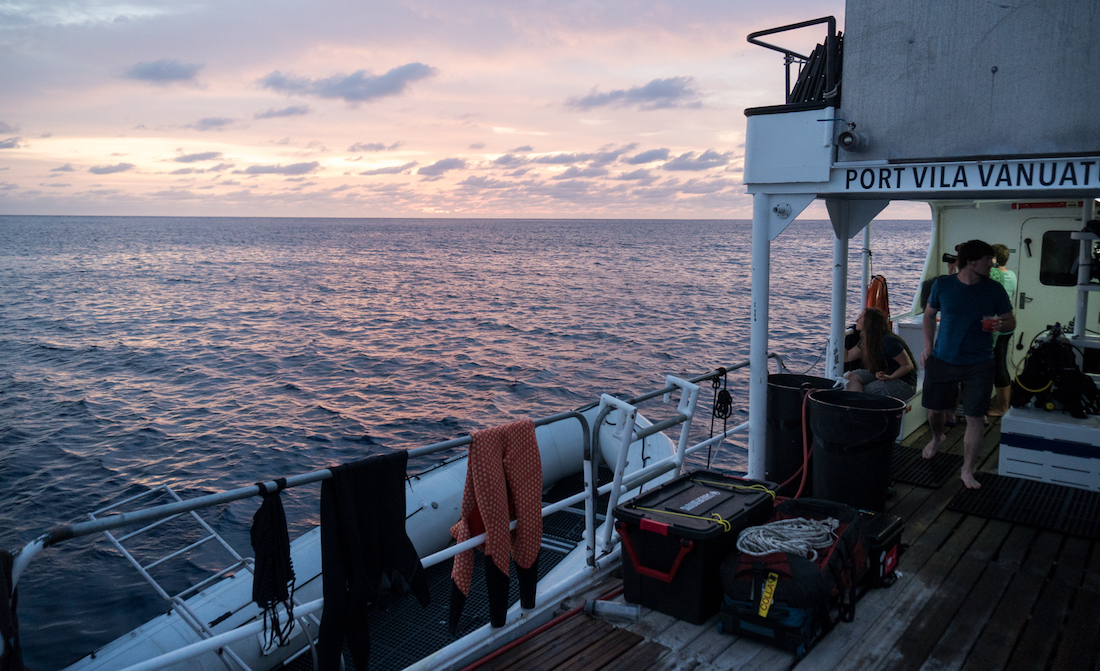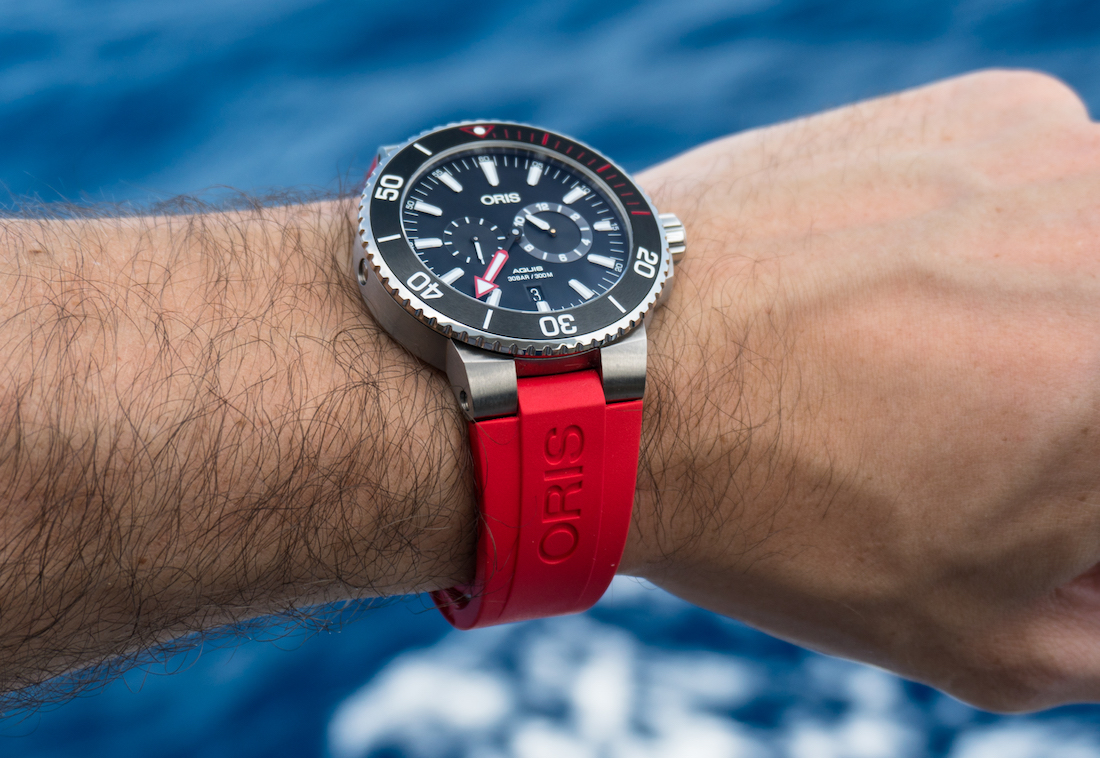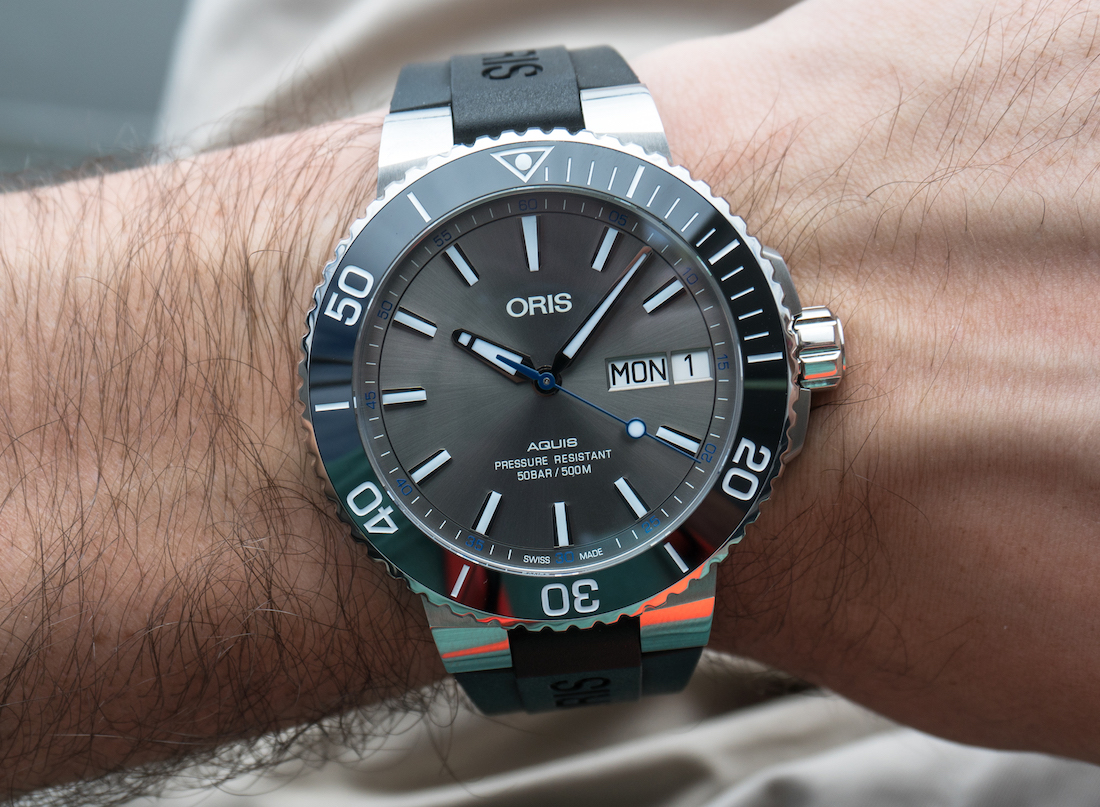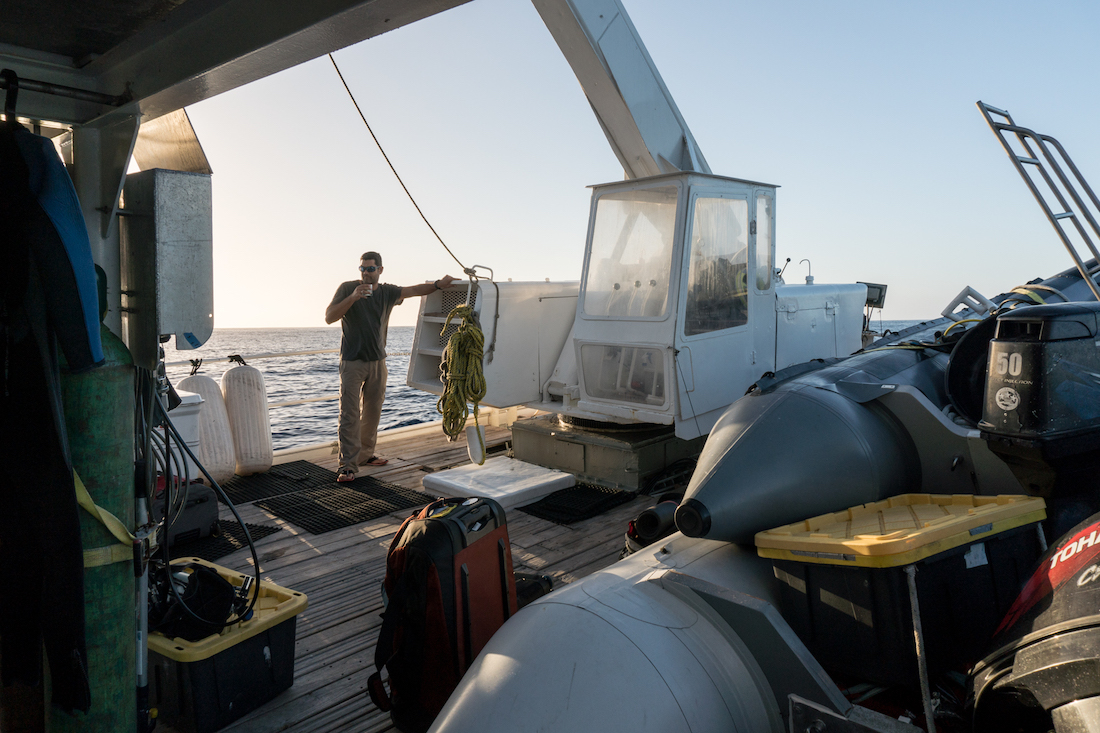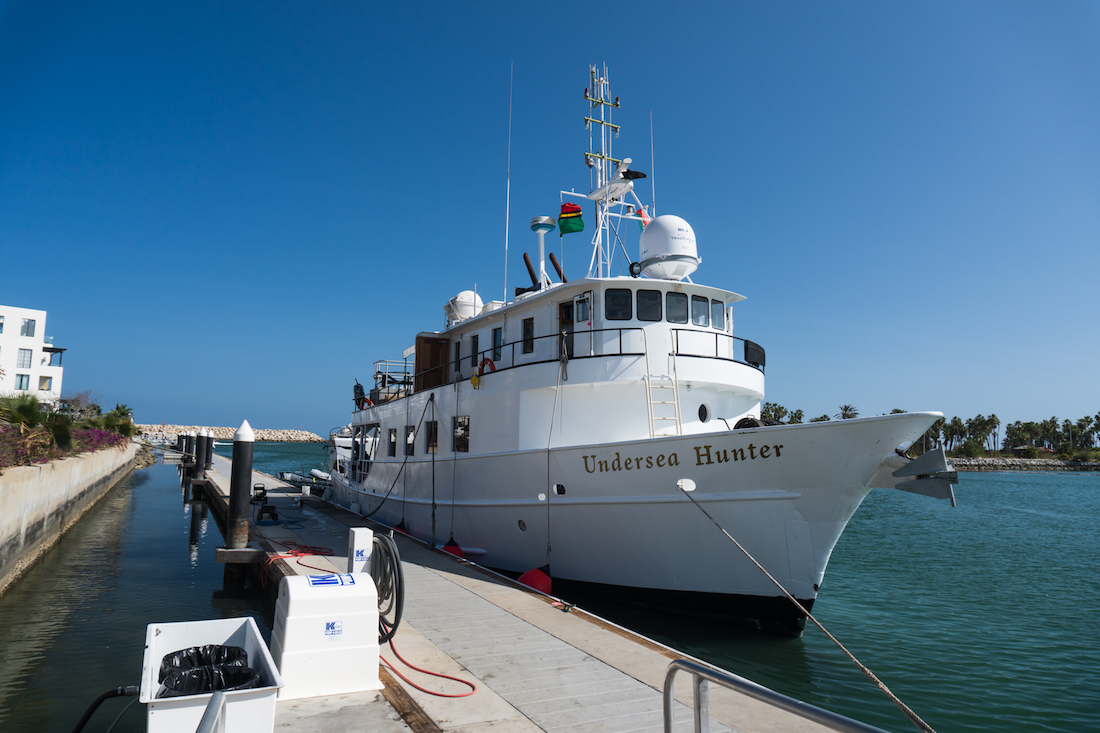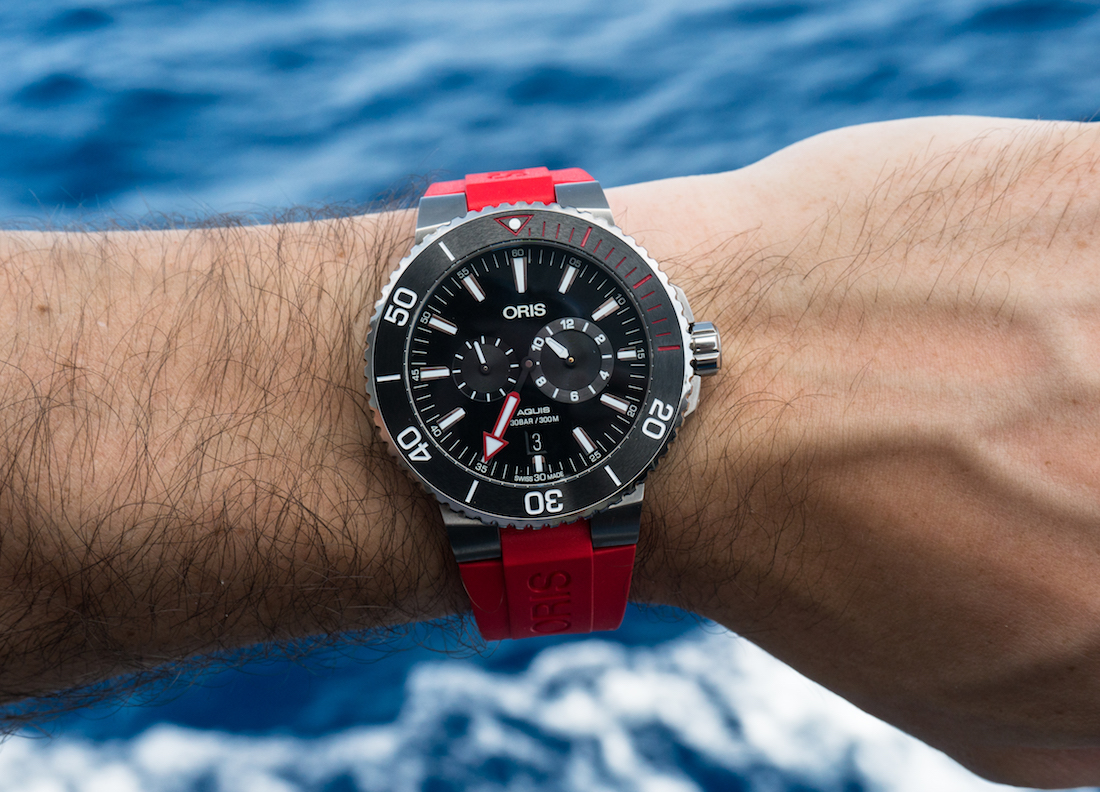
On my wrist for the entire visit to Clipperton, my constant companion, was the Oris Aquis Regulateur “Der Meistertaucher.” Despite its titanium case, the 43.5 mm Regulateur showed little wear from all of the diving, the various hard edges around the boat, the abusive trips to the island, and a constant film of sweat, sand, and sunscreen. The Aquis Regulateur is a consummate dive watch. The bezel is excellent, legibility is first rate, the rubber strap is supremely comfortable, and the extension system in the titanium fold-over clasp is easy to use and can be adjusted on-wrist. Just pinch the two buttons and slide the pinset to tighten or relax the strap. If you need more extension for a thick wetsuit, you can quickly adjust the placement of the rubber strap as Oris has opted for a no-cut system that preserves the full strap length.

Wearability is excellent and the slightly domed shape of the case places much of the case flank under the protection of the ceramic bezel insert, so any bumps or scrapes are deflected away from the titanium case. I wore the Aquis Regulateur in some very tough scenarios and while the clasp looks like it has been through war, the case appears unscathed. With a solid mix of design and comfort, the Aquis Regulateur’s party trick is its uncommon Regulateur layout, placing the hours hand on a sub-dial at 3:00 and leaving the minute hand in its traditional placement. This is not commonly seen on any watches, let alone dive watches (Oris was the first, back in 1999). But not only does this layout provide excellent legibility of the minute display (a bonus for diving), it adds a novelty that makes the Aquis Regulateur feel strange and special. Combine all of that with a punchy red rubber strap (and a matching wetsuit) and you have a watch that couldn’t feel more at home while diving on one of the most remote atolls on the planet.
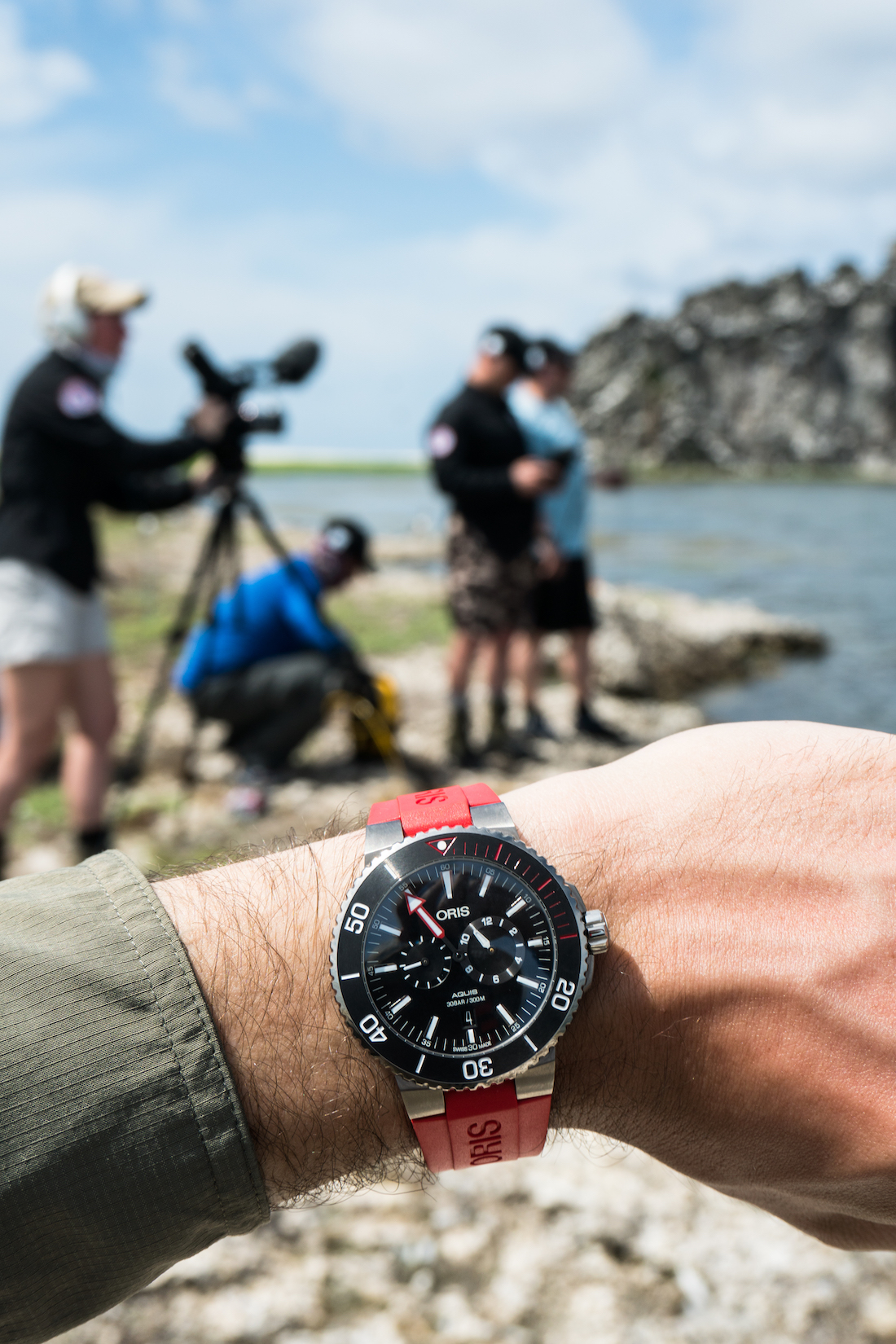
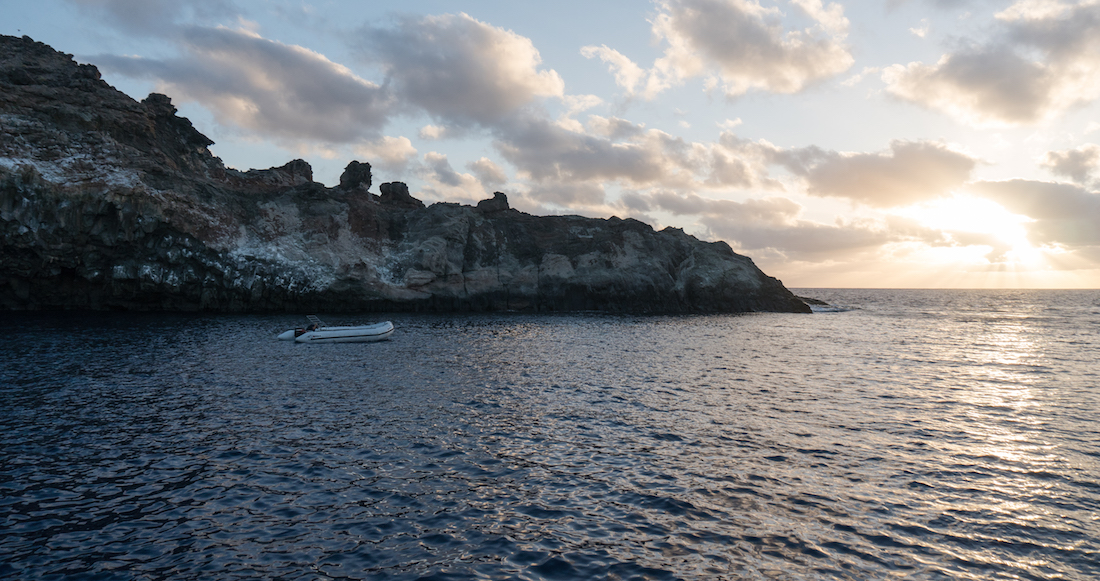
Socorro and San Benedicto
The Revillagigedo Archipelago is a group of four islands some 390 km southwest of Cabo San Lucas. We make Isla Socorro early in the morning of May 11th and drop anchor at a dive site called Cabo Pearce. A UNESCO World Heritage Site, Cabo Pearce lies along a rocky outcropping that reaches out from Socorro and slowly lowers into the Pacific (seen above). The dives started on the wall of this strand of rock but as the crest of the rock dips below the surface, one can dive along the ridgeline. We had three excellent dives at Cabo Pearce, with a trio of friendly manta rays, plenty of white tip reef sharks, and a quick appearance by a group of large dolphins. The mantas feel like an animal not of this world, they move without effort and seem endlessly interested in our group. They made slow circles, chasing bubbles and interacting with divers. It was a dreamlike experience cut short only by my excited breathing and ever-dwindling air reserve.
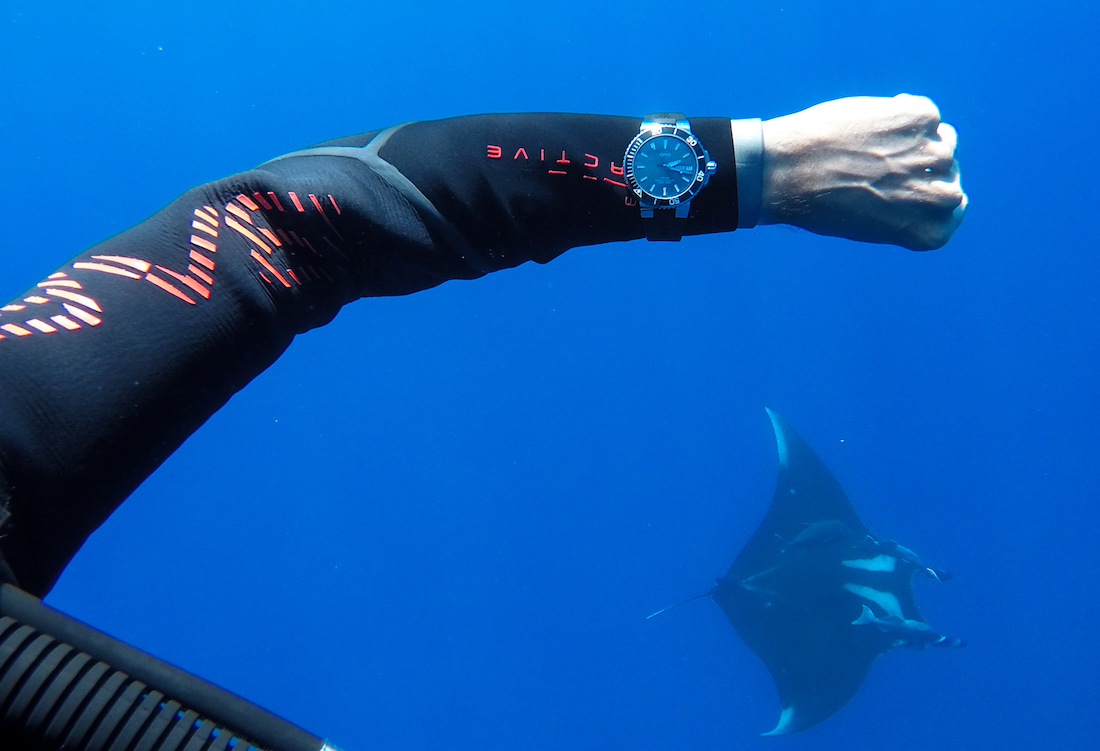
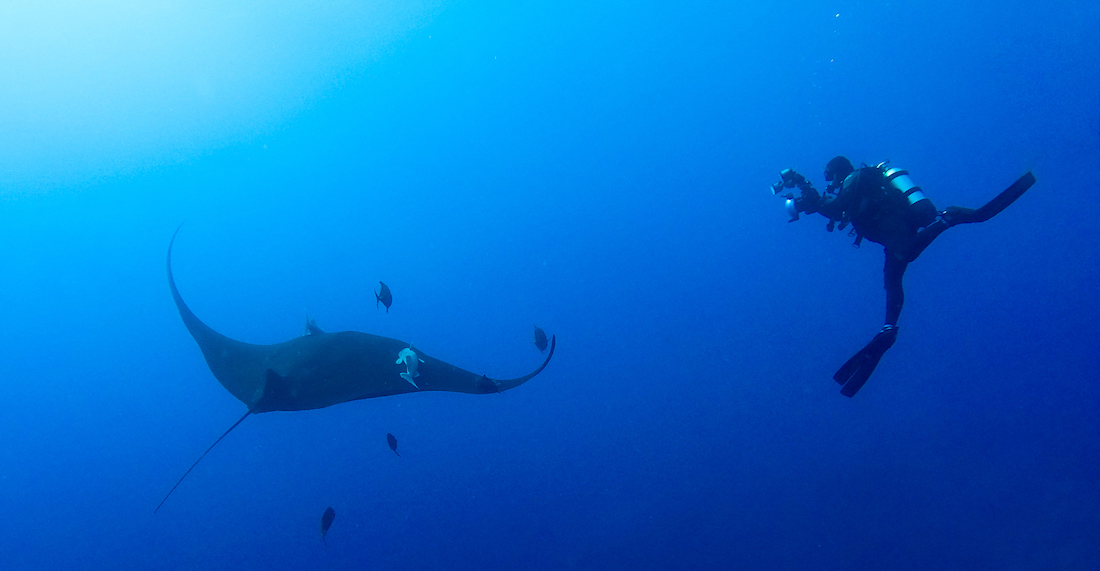
While diving Socorro I opted to wear the Oris Aquis Hammerhead LE, a 45.5mm steel limited edition diver made in support of the 2017 Pelagios Kakunjá shark tagging program that focuses on Scalloped Hammerhead sharks. I had been told that I stood a good chance of seeing a hammerhead during our time on Socorro, so it seemed a fitting choice.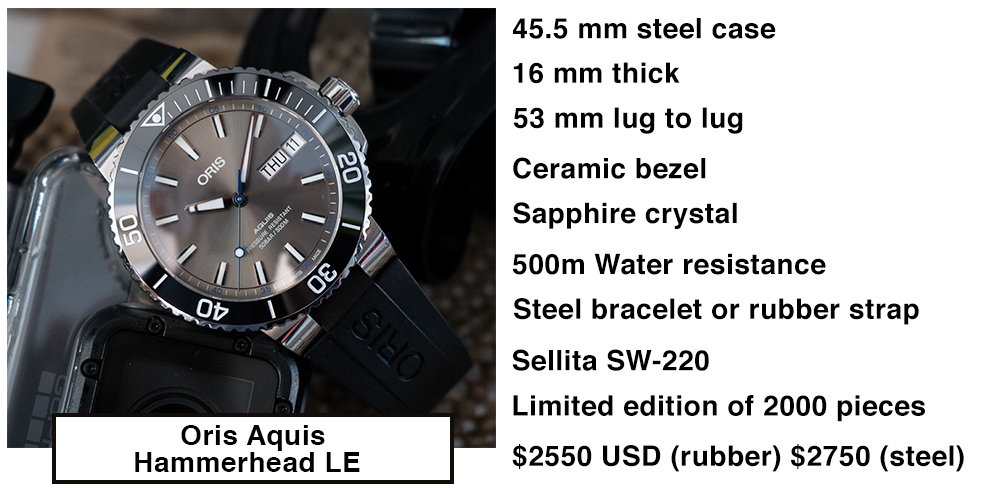

While certainly larger than the Regulateur “Der Meistertaucher,” the Hammerhead LE is a more straightforward dive watch, with a grippy ceramic-laden bezel surrounding a wide dial with large hands and ample markers. Thanks to short lugs and a wide black rubber strap, the Hammerhead LE wears well and doesn’t flop about like some larger dive watches. Comfort is excellent and I found the day/date display to be very handy while spending two weeks at sea. I had entirely lost track of both my monthly and daily calendar, so this information was rather helpful when phones became useless and I wanted to keep a daily log.
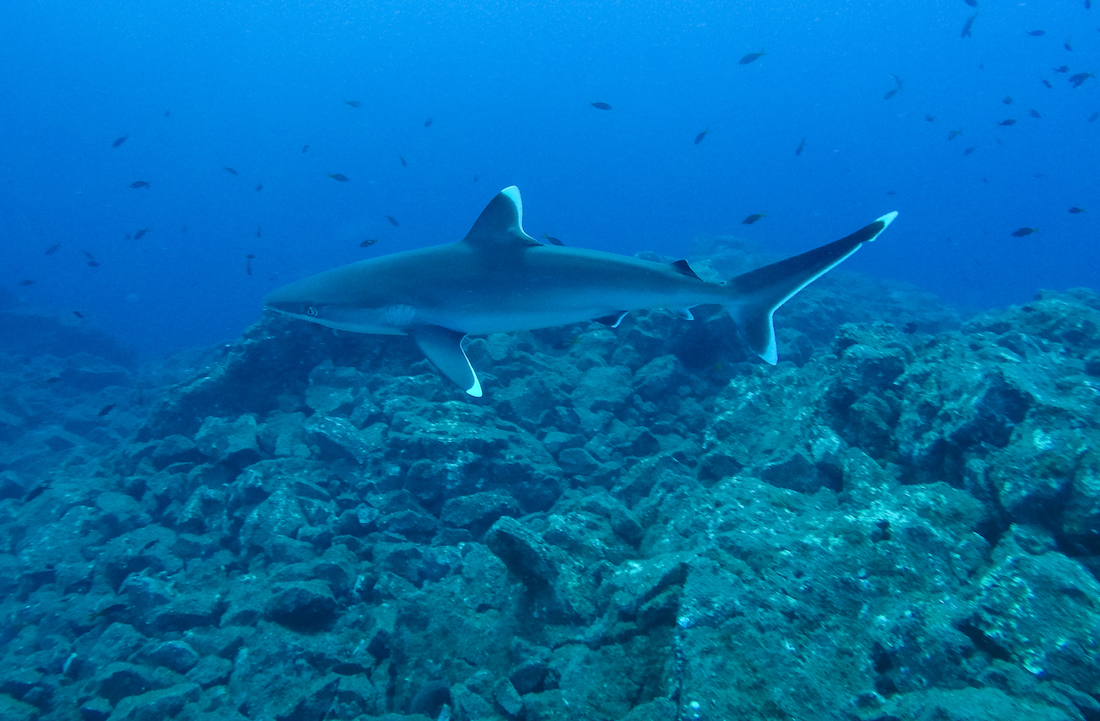
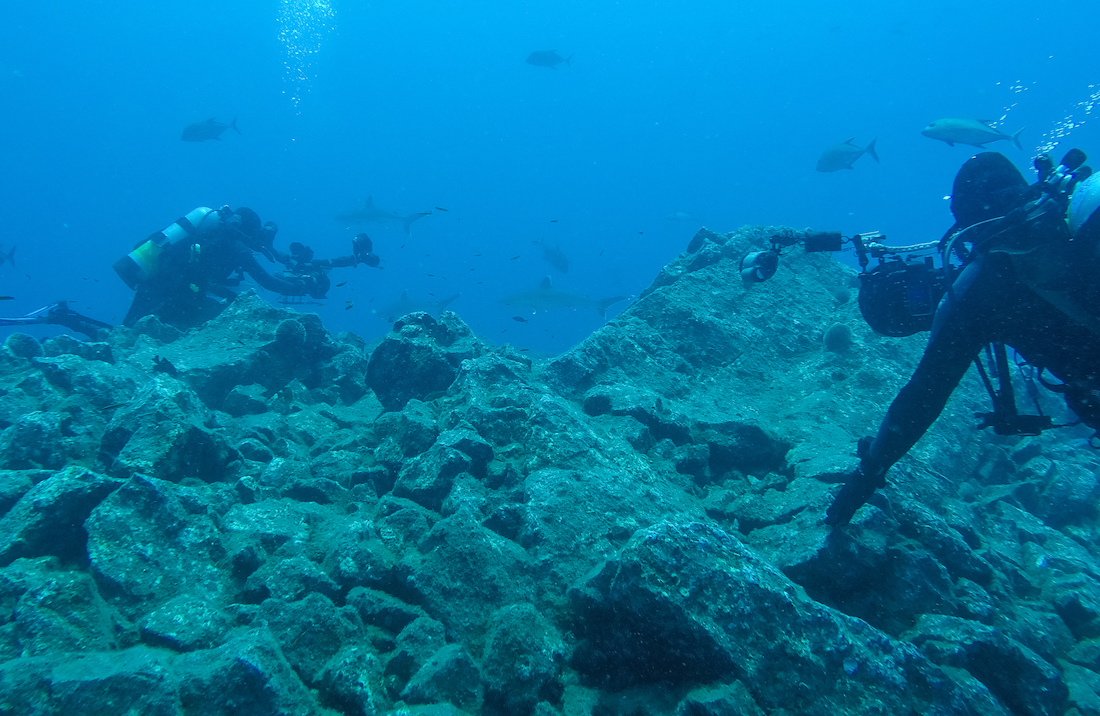
The lume on the Hammerhead LE is very impressive. My cabin was pitch black at night and I often found that I could see shadows cast by the light of the Hammerhead’s impressive hands and markers. While not as initially as bright as some C3 luminous applications, the blueish BGW9 lume on the Hammerhead was easily the brightest example I’ve seen for this color, and it lasted a great deal longer than I would have expected.
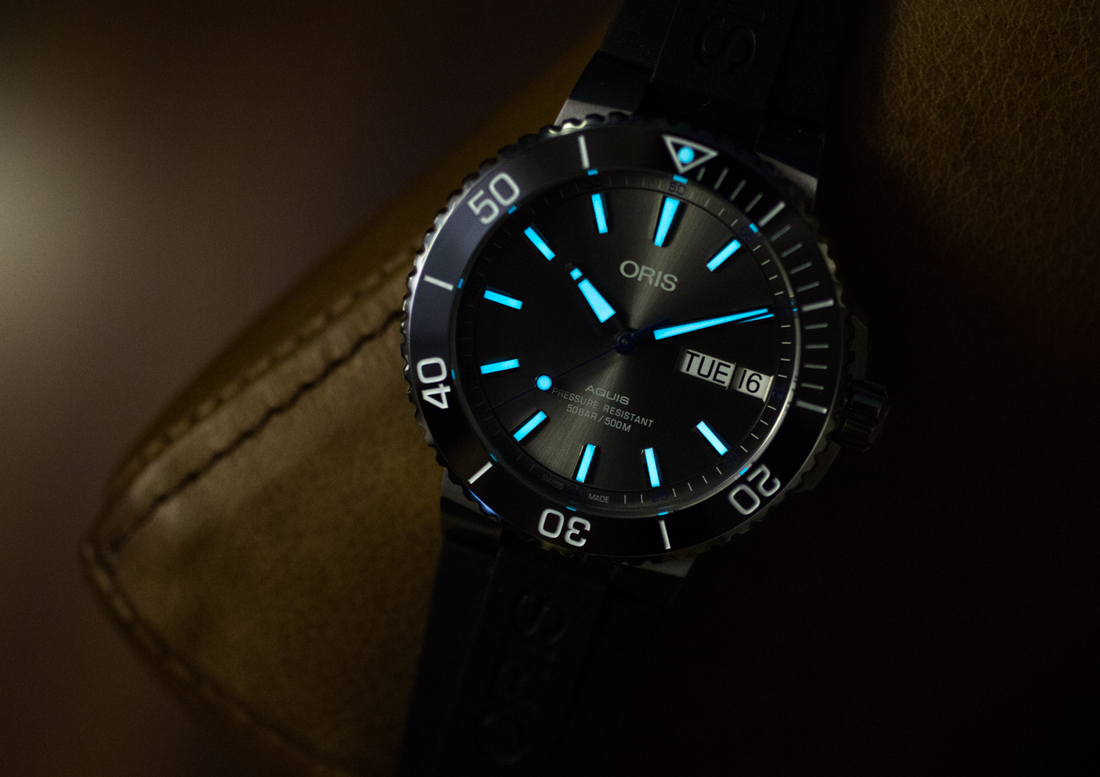
We would finish our final day of diving on a famous San Benedicto site called “The Boiler.” A large but fully submerged spire of striated rock offshore of the island proper. The Boiler reaches nearly to the surface and is named as such for the tumultuous water just above its flat peak. Like a slow motion BASE jump, I descend from the back of the Under Sea along the near-vertical column of stone, marveling in the excellent visibility and the amazing rock formation hidden just a few meters below the surface. Following Michel and Julie, Michael and I start a slow circle around the mid base of the boiler. There are various flat platforms of rock and the water surges up and down, carrying diver and fish alike. During the dive, we circle the entirety of the spire and see a large manta and a pocket of rock filled with white tip reef sharks.
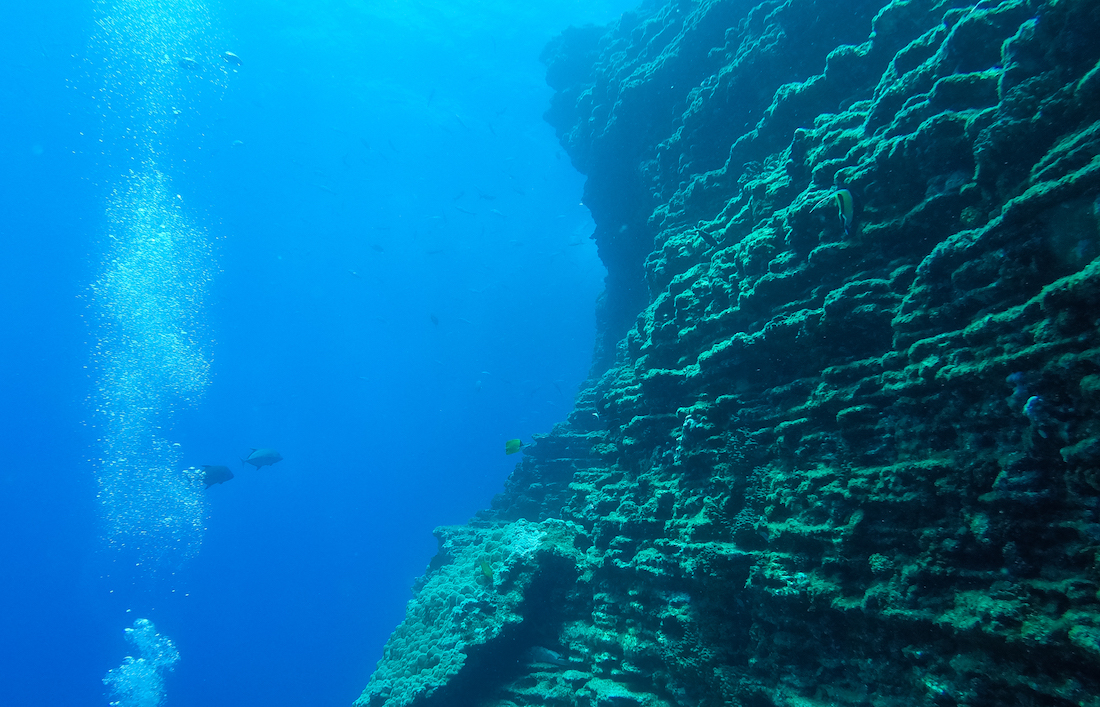
Climbing out of the surf and into the dive skiff, I am confronted with this being the end of my adventure, the last unit of real activity on one of the most amazing experiences of my life. My first liveaboard, my first trip to a deserted island, my first significant time at sea, my first time diving in open water with sharks, and my first time diving with mantas, and all of it with a group of great divers and a pair of very impressive dive watches. I’ve heard the saying that fun is often best enjoyed when it’s over, begrudgingly, and having not seen a single hammerhead, I am forced to agree.
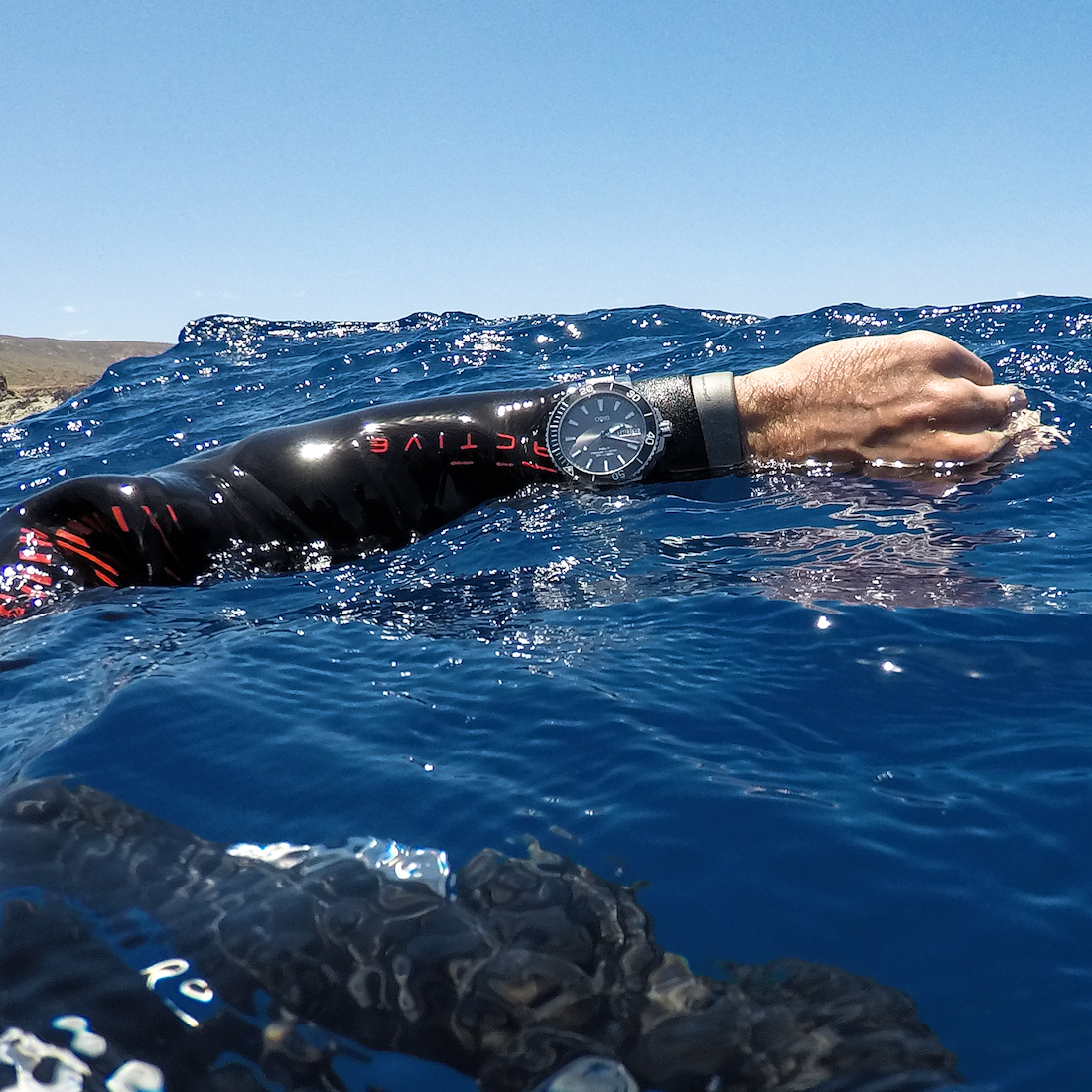
I have a new respect for people like Michel and Julie, who labor to make these sorts of expeditions possible. Those who endeavor, often for years, to spend a few brief moments highlighting a place like Clipperton, sharing it with others, helping to explain what it means within the context of our world. Additionally, it was interesting to experience a watch-related event that had very little watch brand involvement. Unlike your normal press junket, there was no Oris representation aboard, no grandstanding, and only light branding. From studying the Great Barrier Reef, to protecting hammerhead sharks, and planting staghorn coral in the Florida Keys, supporting Big Migrations II is just another example of Oris taking an active role in ocean education and conservation efforts. To be part of an expedition that seeks to have a real impact was nothing short of extraordinary. I can see why people attempt to do this for a living, and why brands like Oris would want to connect their product to the greater project and its goals.
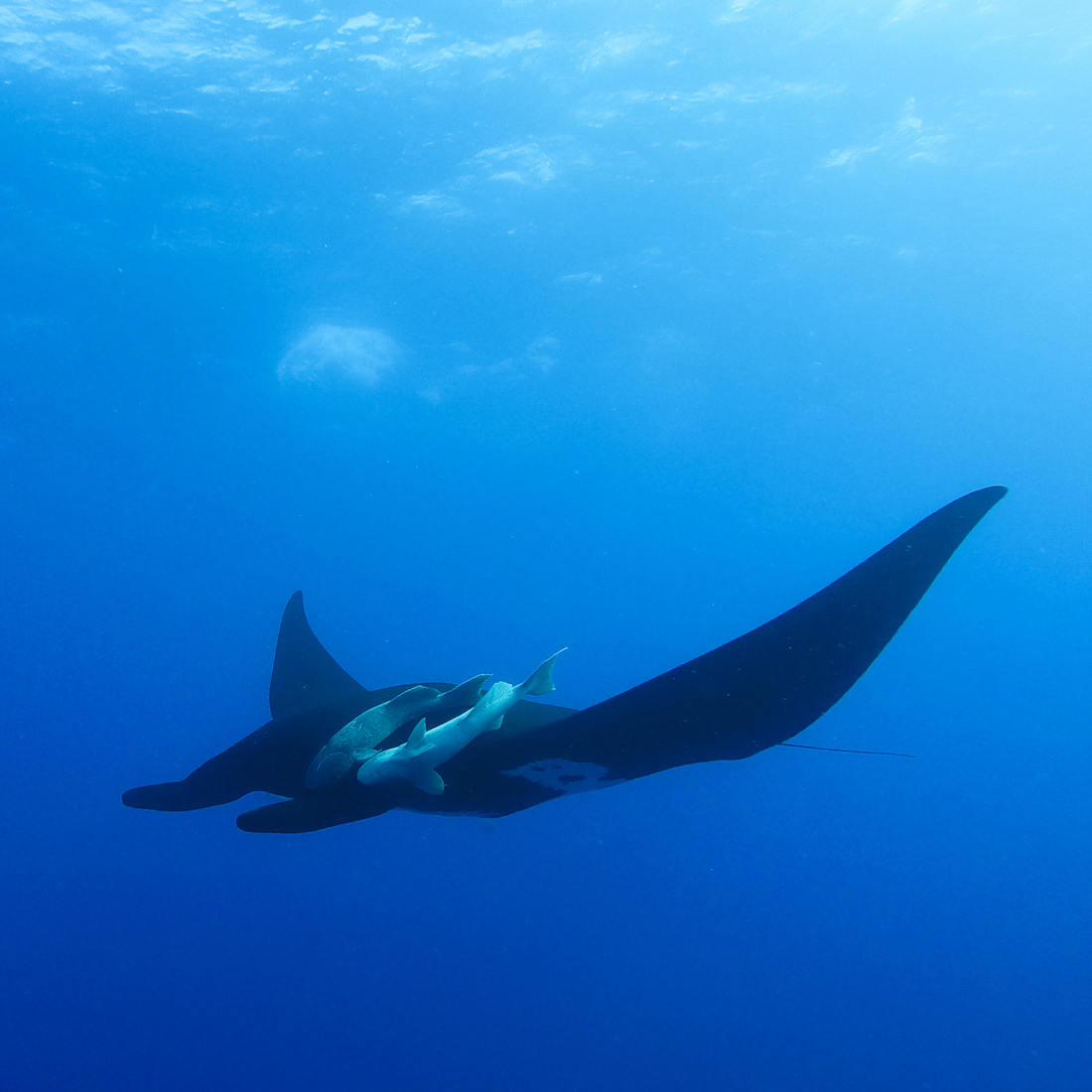
Squinting in the bright sun over San José del Cabo, I leap from the deck of the Under Sea, returning to dry land and a life not as disconnected from Clipperton as I would have once assumed. As I dream of my next adventure, I’ll recall the warm waters, the peeling skin on my hands, the squawk of the birds, the comforting roll of the boat at sea, and the slow inquisitive passage of the mantas. While adventure like this is impermanent and should be savored as such, Clipperton is resolute. Though easy to ignore due to its seemingly disconnected and hostile nature, Clipperton is closely connected to the ocean, and thus, the world. oris.ch
Special Note: All photos of and from Clipperton were obtained under official permit #HC/1485/CAB/BSIRI/MG

